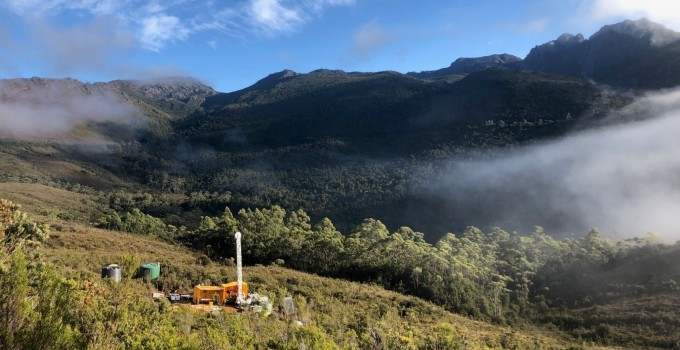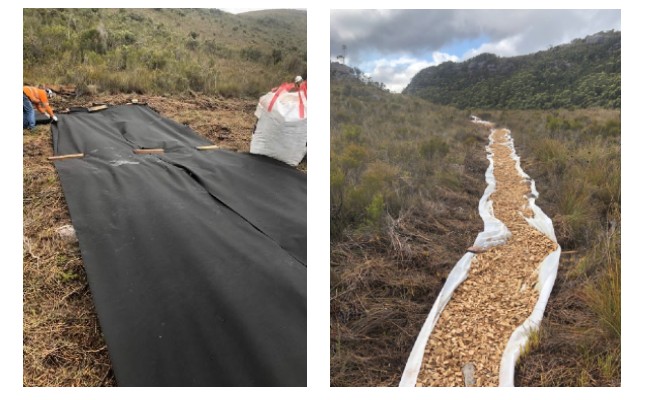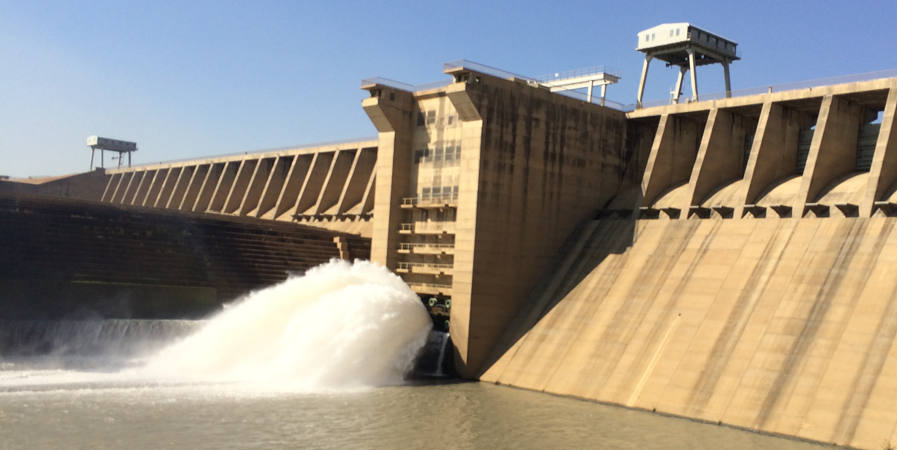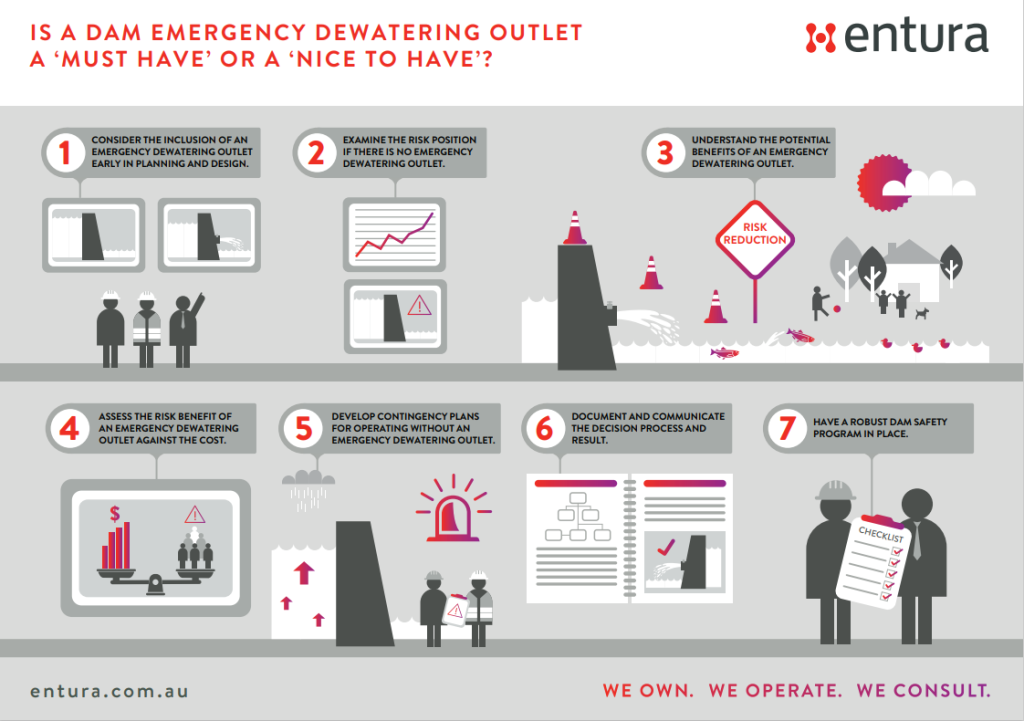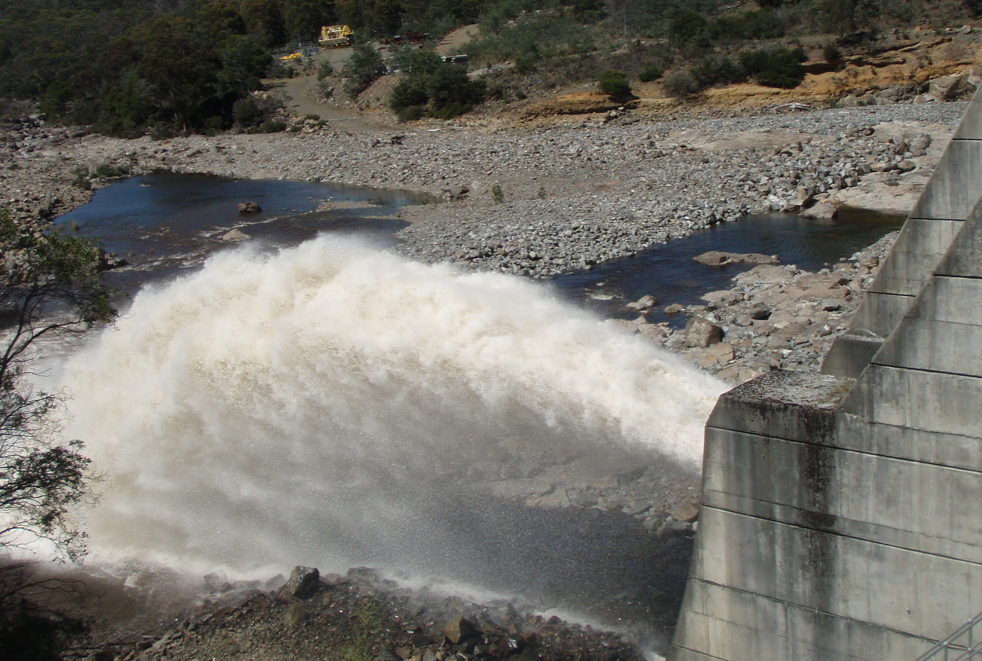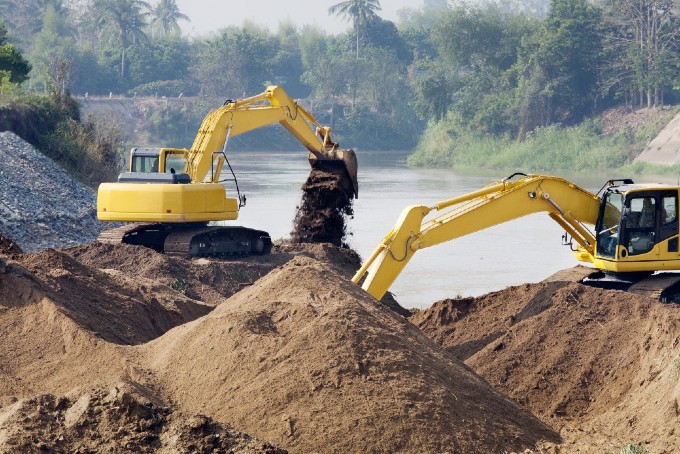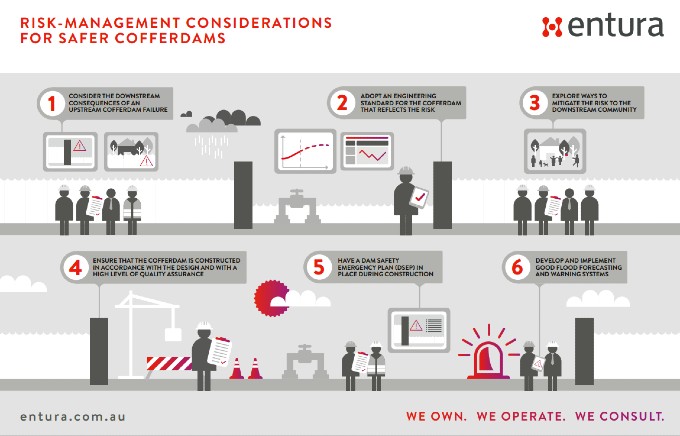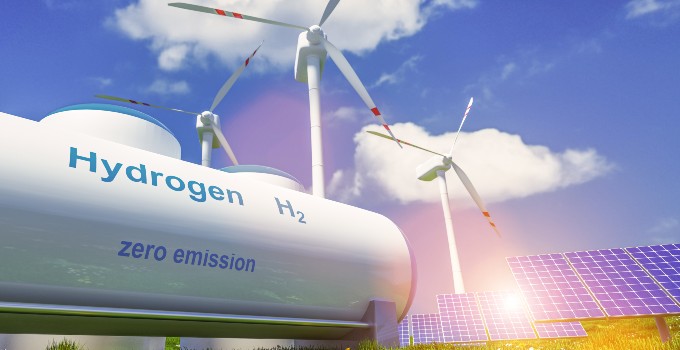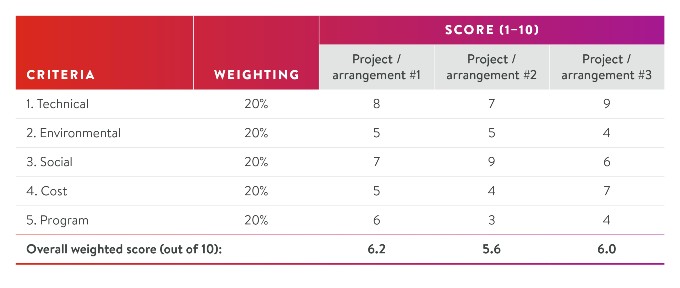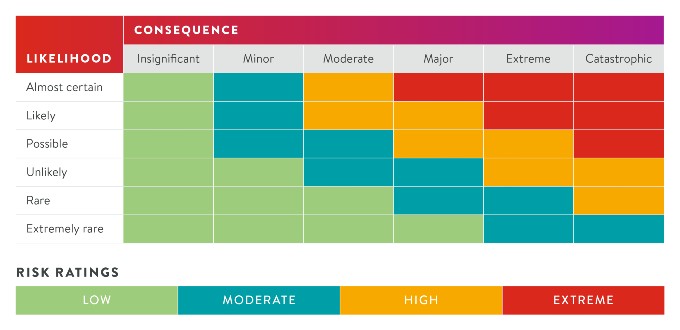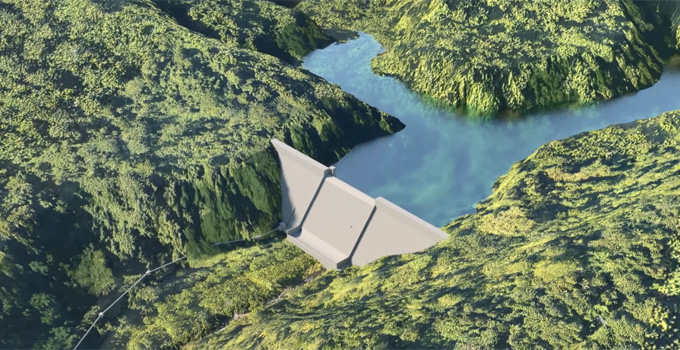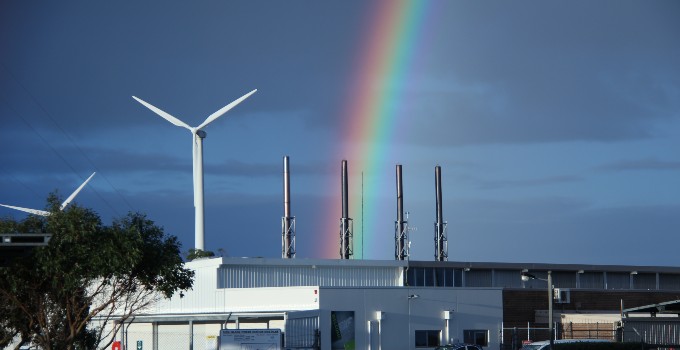When is the best time to invest in deeper understanding? An example from hydraulic modelling
With projects and operations, like life, knowledge is power – the power to make informed decisions and manage risk. That knowledge can be gained in different ways, at different costs, and at different stages of a project. In an era of ever-more-sophisticated digital tools, how do we decide what’s best for the project?
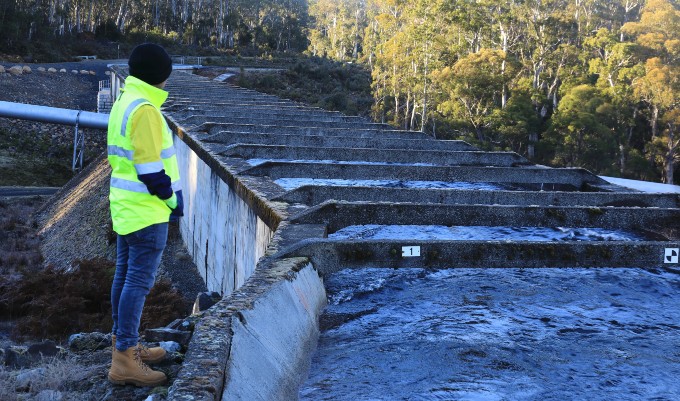
The understanding of when to invest in more accurate assessments is changing. Traditionally, more accurate assessments were time-consuming and costly, and left to later in a project’s life. Now, however, improved techniques and computing power make greater accuracy both possible and affordable earlier.
Here we look at the issue of when to invest in more accurate assessment tools using the example of where hydraulic modelling is a key part of projects, often in the development of water infrastructure.
As a project evolves or a system is operated, different levels of knowledge will be needed to make informed, defensible decisions. This knowledge comes from experience and from assessments specific to the project. With water modelling, these assessments vary in complexity and data requirements. They also need to be integrated into the design and approval for the development.
Investing too early in a detailed assessment can be wasteful, as there usually isn’t the data to support the approach. Even if the data is available, a high-cost investment too early in the project can be wasteful if the project is stopped or changes direction. However, investing too late in gaining a better understanding of the system and risks can lead to poor decisions and rework later, as the design may have advanced on poor assumptions for critical elements.
There is, therefore, always a balance to be found in the timing and the approach to take. If there are too many options for solutions late in the project life, there’s a danger of analysis paralysis. Knowledge gaps, too, can paralyse a project.
Increasingly sophisticated modelling is becoming more widespread and available
Understanding the behaviour of water as it moves around us, our environment and our structures is based on physics and statistics. Hydraulic modelling of water systems can range from a single line equation that takes only seconds to calculate, to complex numerical models that take months to work through.
In the past, with limited or no computing power, modelling required hand calculations. As techniques improved and computing power increased, it became possible to conduct numerical modelling with a simplified set of physics. For surface and pressurised water systems, these were called one-dimensional models. Over time, it became practical to use two-dimensional models, then limited three-dimensional models, and then full three-dimensional ‘CFD’ models. Computational fluid dynamic (CFD) models are the current state-of-the-art tools for hydraulic modelling.
CFD and physical modelling can provide such competitive advantage that there are now rules to limit the use of these tools in the racing car industry. This is because the tools are costly, so less affluent teams are disadvantaged by not having access to them. To level the playing field, the top teams are required to use less than the bottom teams.
In the world beyond racing cars, there are also limits on using state-of-the-art tools. Limits can be financial, skills, suitable input data and time. But as they become easier to use, CFD tools are finding their way into the early stages of projects.
In hydraulic modelling, not every engineer has access to a hydraulics laboratory in their office, although we all wish we did! So when there are uncertainties about how a system may work, it’s not usual to make a physical scale model and test things to get the insights needed to fill any knowledge gaps. To give engineers early insights into a system’s behaviour – which helps us find the best solution faster – we used to use simple hand calculations or one-dimensional models, but it is now becoming more common to use CFD and other advanced tools earlier in a project’s life.
Advantages of CFD in practice
Let’s look at a real-world example: understanding the overtopping of a dam wall with an upstream parapet wall during an extreme flood.
In this project, only hand calculations were to be used to work out the relationship between water flow rate and water depth above the wall. But during the hand calculations, it wasn’t clear if the water, after flowing over the parapet wall and then flowing over the rest of the crest, would build up and affect the upstream water levels by submerging the parapet. If the parapet was submerged, this would change the hand calculation method. There was a knowledge gap.
Initially, some testing was done with a one-dimensional numerical model, but this didn’t provide much insight into the hydraulic behaviour. So a simple CFD model was quickly built based on some hand sketches. The CFD model made it clear that there was no submergence of the parapet, allowing the use of the correct hand calculations. It filled the knowledge gap.
Now that the CFD model had been built, it could also be used to help validate the key inputs to the flow–depth relationship over the dam. The CFD model therefore benefited the qualitative understanding of the system’s physical behaviour as well as providing a second approach to solving the initial problem and improving confidence in the solution.

So what’s the lesson here?
CFD wasn’t initially considered when the overall project was scoped, as CFD was traditionally considered to be too expensive. In the end, though, it was a valuable key to filling a knowledge gap and provided unplanned secondary benefits.
CFD isn’t going to be the answer for every hydraulic modelling project – but the general solution is to use the most accurate method that can be afforded as early in a project or operation as possible. There will always be a balance to be found in when to invest in accurate assessments, but the decision should be based on the contemporary lower effort to use and get results from these approaches, and the power gained by the extra knowledge they can provide.
If you’d like to talk with Entura about your water or dam project, contact Richard Herweynen.
About the author
Dr Colin Terry is a civil engineer at Entura with three decades of experience in Australia and New Zealand. His experience includes modelling, planning, design and construction support. He has worked on multidisciplinary projects across various parts of the water cycle including catchment management, water supply, hydropower, land development, transport, and water quality in natural systems – with a focus on surface and piped water.
MORE THOUGHT LEADERSHIP ARTICLES
How robust is your emergency preparedness?
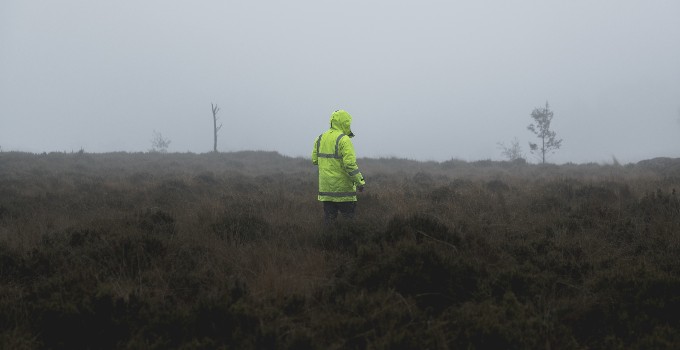
The old adage of ‘a company’s greatest assets are its people’ is never more true than in an emergency situation. The success of any emergency plan depends upon the skills, training and willingness of the people involved. It also relies on robust emergency preparation that takes as many scenarios as possible into account, and builds in a range of backups and alternatives for maximum agility and resilience.
All responsible dam owners have dam safety emergency plans (DSEP) which are carefully created and tailored to the needs of the company, its assets and its available resources.
If called upon in an extreme event, these plans will likely be pushed to their limit – but it’s vital that they perform as intended to reduce risk and consequences downstream.
The ultimate test of the emergency plan is how well it can cope with outages of power and/or communications. ‘Stress testing’ emergency plans for outage scenarios and implications is key to achieving a robust plan.
Power and communications outages
Where dams have moving parts, such as valves or floodgates, backups are needed to counter power outages. Are backup generators in place, or can a portable generator be brought to site at short notice? Is there a clear, safe access route to site during emergency conditions (e.g. not flooded or blocked by fallen trees)? Where this is not possible, can the valves or floodgates be operated by hand? A further question is whether these components are readily operable and exercised regularly.
Many dams are located in remote areas, and in some cases mobile phone reception is unreliable. In these situations, can satellite phones be made available? Landline phones may be available but depend on poles and lines remaining intact and operable during emergency conditions.
Communications are vital to ensuring the emergency plans are enacted under the direction of the incident controller. Where communications with remote resources are limited or not possible, those involved must fall back on their training and on lessons learnt from exercises and site-based, staged events involving scenarios of outages of power and communications. The DSEP can be updated with suggested actions for the on-site operators and emergency management team to follow in the worst-case scenario.
Alternative means of communication and access
In situations where check-in communications are required with those working remotely, alternative means must be considered in case of an outage of communications. In the absence of satellite phones, this could involve a messenger driving to site, but this relies on clear, safe access routes and careful consideration of the time required. In extreme cases, the only means of reaching a remote site may be by helicopter. This would require pre-arrangement with the closest helicopter providers regarding emergency availability.
The situation is similar with suppliers of plant and materials that may be required to assist with conditions at or downstream of the dam. How can they be contacted, and is there clear, safe access to site? Consider having emergency stockpiles at site or nearby and ready access to earthmoving plant.
Decision-making in a SCADA outage
If a power outage results in a localised SCADA outage, there will be no current instrumentation data available to guide critical decisions. In such circumstances, decisions must be based on likely behaviour during emergency conditions or on forecasts from before the emergency is declared. This would likely require detailed knowledge of the dams and their components, which highlights the importance of regular routine monitoring and detailed studies such as comprehensive surveillance reviews and dam safety reviews.
Company culture, teamwork and support
Where there is a ‘no blame’ company culture in which employees are encouraged to speak up, point out flaws in systems and processes and identify faults with assets, there is a greater likelihood that employees will participate successfully in staged exercises and events and provide useful information regarding how an incident response team will perform during an emergency.
Another important aspect of company culture is working together as a team. It is possible that a person may become fatigued but cannot convey this due to a communications outage. It is also conceivable that during an emergency a person may be unwilling to ‘leave their post’ until the job is done, becoming fatigued in the process.
It is important to have backup resources and to limit time in any role during the emergency to minimise the chance of mistakes being made. The emergency plan is only as strong as the weakest link in the chain of command.
For all resources, including external resources, provision of backups should take into account leave, prolonged illness and the need to ensure replacement when employees leave the company.
Where a company has a strong and positive safety culture and team ethos, detailed knowledge of its assets, regular inspection and exercising of valves and gates, and a commitment to team-based emergency training, employees are more likely to overcome the challenges posed by outages of power and communications during emergency conditions. They will find a way.
No one can predict and plan for every emergency scenario, but we believe that the tips we’ve shared here can help dam owners to develop and maintain robust emergency plans that have a higher likelihood of success when called into action.
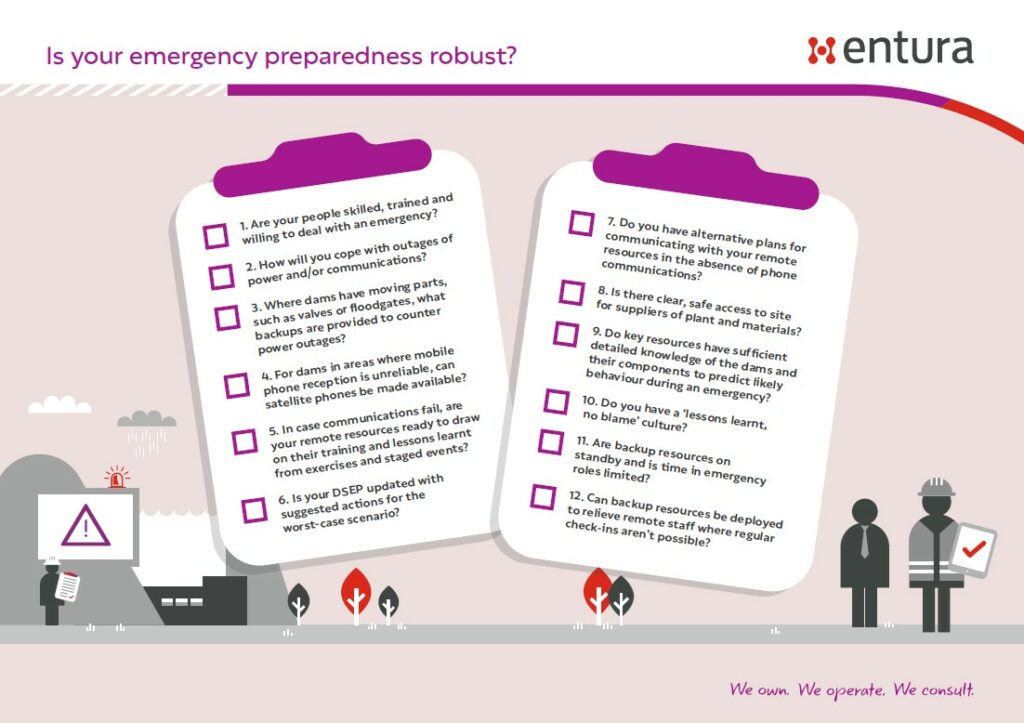
If you would like support with your emergency planning, contact Richard Herweynen or Phillip Ellerton.
About the author
Jamie Cowan is a senior dams engineer at Entura with over 2 decades of civil engineering experience in the UK and Australia. His experience includes the management of investigation, design and construction projects in the civil, dams and water industries. He has worked across all stages of project delivery, from feasibility to the commissioning of assets. He has provided construction support roles during dam construction and upgrade projects, and conducted intermediate and comprehensive inspections of dams for water authorities in Victoria.
MORE THOUGHT LEADERSHIP ARTICLES
Is there still a role for run-of-river hydropower projects?
In 2000, a major report by the World Commission on Dams shone a spotlight on large dams. At that time, some people argued that smaller, run-of-river hydropower could be a more sustainable solution than large dams with large reservoirs. Is this true? And is it still relevant more than twenty years on?
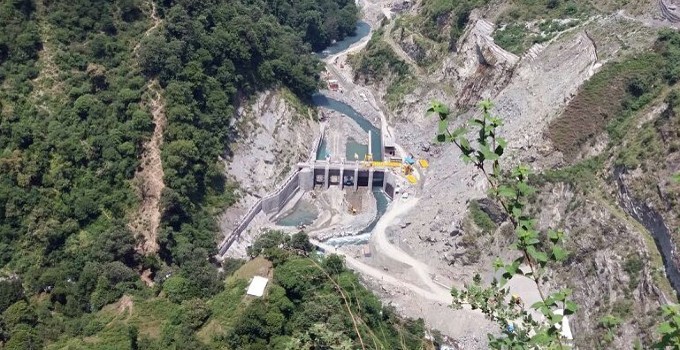
Run-of-river hydropower projects have little or no storage, which means that they don’t require the construction of a large dam, and don’t need to inundate a significant area with a large reservoir storage. Run-of-river hydropower may therefore have lower social and environmental impacts. A diversion weir is less likely to be a barrier to sediment transport, fish passage, or navigation; however, because run-of-river hydropower still involves constructing a structure in the river, these schemes are unlikely to have zero environmental impact. It is interesting to note that run-of-river hydropower projects and other small projects that do not involve the construction of large dams account for more than half of the hydropower projects supported by the World Bank.
Despite potentially having a lower environmental and social impact, run-of-river projects do have a significant disadvantage compared to large reservoir hydropower. For run-of-river projects, not all of the energy is ‘firm’, as the ability to generate depends on the availability of flow in the river. If a river catchment is highly responsive to rainfall, the daily variation of generation from a run-of-river hydropower scheme could be highly variable (similar to wind and solar).
If annual rainfall is highly seasonal, with a dramatic wet season and dry season, then a run-of-river hydropower scheme will generate much more power when seasonal river flows are high, and significantly less during drier months. So a run-of-river scheme will not necessarily be able to play the increasingly important role of firming variable renewables, and is more likely to be considered an additional source of variable renewable energy.
Run-of-river may not offer storage, but it can still have a place
But this doesn’t mean there’s no longer a place for run-of-river hydropower, as it is still a valuable and clean form of energy. In some situations, the lack of firming capacity doesn’t necessarily matter too much due to the existing diversity within the generation portfolio, or the type of generation that is being displaced. Run-of-river hydropower can still be a viable option in these circumstances:
- where the run-of-river hydro scheme is part of a larger portfolio of hydropower assets, which already has storage within the overall system – in this situation, the various hydropower generation assets can be operated together as a dynamic, integrated system, using the various assets to deliver an optimum output
- where the run-of-river hydro scheme is part of a diverse portfolio of variable renewables, including solar, wind and run-of-river hydro – in this case, it is unlikely that the mix of variable renewables will be highly correlated (i.e. it is unlikely that when there is no water in the river, there is also no wind or sun), and therefore less energy storage will be required to firm the variable generation
- where the run-of-river hydro is displacing expensive thermal generation – such as the displacement of diesel-powered generation on an island or a remote off-grid site.
Achieving sustainable storage
If there is potential to add storage to a hydropower scheme in a sustainable manner, then this is likely to create more long-term value, especially in an escalating clean energy transition. Storage will make the hydropower more flexible, agile and responsive, and able to ‘firm’ more variable renewable energy sources. With storage, hydropower can match generation with the demand for electricity. Essentially, storage can ‘unlock’ more renewables, and underpin a faster energy transition.
But the key is to make sure that any larger-scale hydropower projects with storage are developed right. In a previous article, we argued that a successful hydropower project requires:
- understanding the current water resource and how it might change – and building in climate resilience
- thoroughly investigating the geological and geotechnical conditions
- projecting future demand in the context of industrial development and population change
- getting the power to where it is needed through appropriate transmission and distribution infrastructure
- carefully considering the project’s stakeholders, community and environment
- securing project finance.
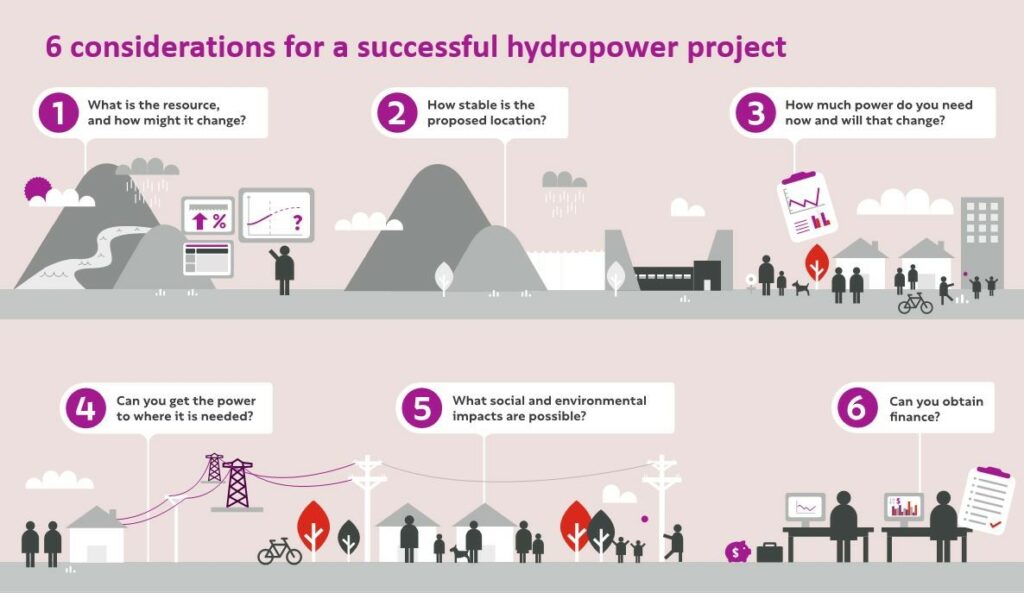
All of these aspects contribute to minimising risks throughout the project lifecycle and increasing the sustainability of the project in the long term, so that it can deliver social, environmental and economic benefits.
The best way to ensure that your hydropower project is developed in a sustainable manner, from the earliest stages of consideration through to operation and end-of-life, is by applying the international Hydropower Sustainability Standard.
Talk to us about achieving the right mix of renewables for your needs, and getting hydropower projects right.
About the author
Richard Herweynen is Entura’s Technical Director, Water. Richard has three decades of experience in dam and hydropower engineering, and has worked throughout the Indo-Pacific region on both dam and hydropower projects, covering all aspects including investigations, feasibility studies, detailed design, construction liaison, operation and maintenance and risk assessment for both new and existing projects. Richard has been part of a number of recent expert review panels for major water projects. He participated in the ANCOLD working group for concrete gravity dams and is the Chairman of the ICOLD technical committee on engineering activities in the planning process for water resources projects. Richard has won many engineering excellence and innovation awards (including Engineers Australia’s Professional Engineer of the Year 2012 – Tasmanian Division), and has published more than 30 technical papers on dam engineering.
MORE THOUGHT LEADERSHIP ARTICLES
‘No dams’ or ‘right dams’? – that is the question
The construction of large dams may be controversial, particularly if the social and environmental impacts appear to outweigh the benefits. How can we create the right kind of dams in the right places to deliver maximum benefit with minimal impact?
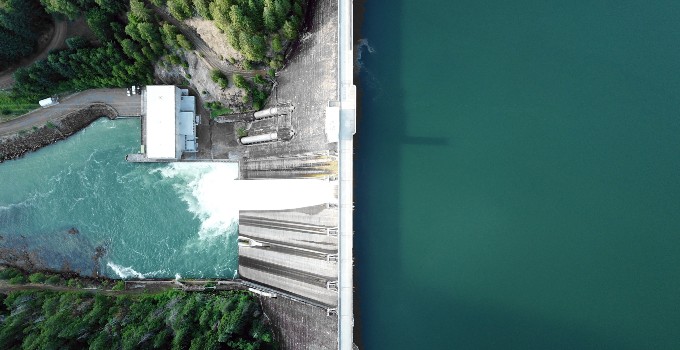
I recently watched Franklin, a documentary in which eighth-generation Tasmanian and environmentalist Oliver Cassidy retraces his late father’s 14-day expedition to attend the Franklin River blockade in Tasmania in the early 1980s. The blockade aimed to stop the damming of the ‘Gordon below Franklin’. This was a divisive time, when many cars on the roads displayed a ‘No Dams’ sticker.
Indeed, some rivers have such high environmental and cultural heritage value that they should not be developed. However, given that water storage is a critical global issue, especially in a changing climate, is ‘No Dams’ a realistic stance?
Dams play an important role within communities by providing much-needed storage for water supply, irrigation and power generation. With greater hydrological variability due to climate change, more water storage will be vital to provide the same level of security for water, food and energy. The security of water, food and energy are inextricably linked, and all three are critical. For example, approximately 50 per cent of all large dams are used for irrigation. Without sufficient water storage, irrigated agriculture, which supplies 40 per cent of the world’s food, is at the mercy of changing patterns of rainfall and runoff. In our view, more water storage is needed for a sustainable future.
However, there are good dam sites and there are bad dam sites. In 2003, the World Bank, through its Latin America and Caribbean region, prepared a sustainable development working paper. This paper, titled Good Dams and Bad Dams, recognised that not all large dams are alike, particularly in terms of environmental and social impacts. It concluded that the level of environmental impact is largely determined by siting. It argued that while dams at good sites may be defensible, dams proposed at inappropriate sites are likely to remain problematic, even with proper implementation of all feasible mitigation measures, and are best left undammed.
Deciding on a site is not simple, and that is because sustainability challenges are complex. To help with decision-making about dams, the World Bank prepared environmental criteria for selecting sites for hydroelectric projects, building on its earlier work towards greater sustainability of dams throughout the 1980s and 1990s. In addition, the World Commission on Dams had been born out of a meeting in 1997 jointly sponsored by the World Bank and the World Conservation Union, and released its framework for dam decision-making in 2000.
International good practice has continued to evolve – and some principles are encapsulated in the Hydropower Sustainability Standard and assurance framework governed by the Hydropower Sustainability Council (drawing on the International Hydropower Association’s own tools and other sustainability principles) and underpinned by the San José Declaration on Sustainable Hydropower. Although these frameworks were created for the hydropower industry, they can be applied to any dam project.
So now, guided by these sustainability frameworks and motivated by the urgency of the clean energy transition and the multiple benefits of dams and hydropower, the challenge is to find the ‘good’, least-impactful dam sites, to enable more water storages to be developed sustainably. The need for more storage is particularly pressing in many developing countries – where there are critical needs for electrification, drinking water and flood mitigation, and where numerous and varied dam sites are available.
How do we do this? Clearly, site selection cannot simply be about cost-effectiveness alone, given that so much of what we value in life cannot be measured in dollars. At the recent Australian National Committee on Large Dams (ANCOLD) Conference, one of the keynote addresses was delivered by Gigi Foster. As an economist, she argued the importance of choosing the right ‘currency’ when making key decisions for society. She argued that we should judge a society by the extent to which it enables people to experience lives that are both long and of quality and wellbeing. A term used for wellbeing over one year is a ‘wellbeing year’ or WELLBY. Ideally, we should seek to maximise the number of future WELLBYs for people in the present generation, but also for future generations.
Arguably, the best dam sites may be those that maximise future WELLBYs – but this might be difficult to calculate. They may also be the dam sites which are the best based on a multicriteria assessment in which environmental and social risks are fully considered. There will be some potential dam sites where the environmental or social impacts are too great, and a dam cannot be justified. Good site selection is the most effective environmental mitigation measure.
Given that we need more water storage, we can:
- Explore opportunities to increase the storage capacity of existing reservoirs by raising dams or by improving interconnection between storages to enable them to work together in a flexible and effective manner. Often, this can be more cost-effective and have lower environmental impacts than a new dam project. Where the benefits are high and the impacts are low, the WELLBYs are likely to be high.
- Identify dam sites, either on-stream or off-stream, that will minimise environmental and social impacts. The simple quantitative indicators proposed in the 2003 World Bank Good Dams and Bad Dams paper could be used for an early preliminary rating and ranking of potential dam projects in terms of their possible adverse environmental or social impacts until more information is generated through detailed environmental and social impact assessments. The environmental and social considerations must be given appropriate weighting in the site selection multicriteria assessment, along with the financial, technical and other criteria typically included. If the assessment is well balanced, it is more likely to reach a positive outcome.
After many decades of controversy about dam development, and with increasing understanding of impacts and far greater sophistication of internally accepted sustainability protocols, it is now up to developers and planners to heed the lessons of the past and find the right dam sites for nature and communities.
If you’d like to discuss how we can assist you with planning, designing and constructing safer dams, please contact Richard Herweynen, Paul Southcott or Phillip Ellerton.
About the author
Richard Herweynen is Entura’s Technical Director, Water. Richard has three decades of experience in dam and hydropower engineering, and has worked throughout the Indo-Pacific region on both dam and hydropower projects, covering all aspects including investigations, feasibility studies, detailed design, construction liaison, operation and maintenance and risk assessment for both new and existing projects. Richard has been part of a number of recent expert review panels for major water projects. He participated in the ANCOLD working group for concrete gravity dams and is the Chairman of the ICOLD technical committee on engineering activities in the planning process for water resources projects. Richard has won many engineering excellence and innovation awards (including Engineers Australia’s Professional Engineer of the Year 2012 – Tasmanian Division), and has published more than 30 technical papers on dam engineering.
MORE THOUGHT LEADERSHIP ARTICLES
What are some of the challenges of hydropower in South East and East Asia?
Entura’s Rajeev Raina, Resident Director India, discusses the challenges of hydropower developments in South East and East Asia, as well as how these are being overcome. This video is part of a broader discussion about the role of hydropower in a changing renewables landscape, lifted from an Entura webinar to celebrate Global Hydropower Day on October 11, 2022.
If you would like to discuss how Entura can help you with your hydropower project, please contact us.
About the author
Rajeev Raina is Entura’s Resident Director India, managing the team there and overseeing our work in the region. He has over 20 years of experience in civil engineering, specifically in detailed design for various power plant projects. Rajeev has in-depth knowledge of structural analysis and has worked on numerous hydropower developments throughout Asia, the Pacific and Australia.
MORE THOUGHT LEADERSHIP ARTICLES
Why is hydropower important for deep storage?
Entura’s Donald Vaughan, Technical Director, Power, discusses the role of hydropower in deep storage, and how this will become increasingly important in a future renewables landscape. This clip is lifted from an Entura webinar to celebrate Global Hydropower Day on October 11, 2022, where our Technical Leaders and Executive Team came together to discuss the future of hydropower.
If you would like to discuss how Entura can help you with your hydropower project, please contact us.
About the author
Donald Vaughan is Entura’s Technical Director, Power. He has more than 25 years of experience providing advice on regulatory and technical requirements for generators, substations and transmission systems. Donald specialises in the performance of power systems. His experience with generating units, governors and excitation systems provides a helpful perspective on how the physical electrical network behaves and how it can support the transition to a high renewables environment.
MORE THOUGHT LEADERSHIP ARTICLES
What role does hydropower play in the race to net zero?
Dr Amanda Ashworth, Entura’s Director of Strategy, Sales and Commercial, discusses the role that hydropower plays in the race to net zero. This discussion took place during the webinar held by Entura to celebrate Global Hydropower Day on 11 October 2022, where our Executive Team and Technical Leaders came together to explore the future of hydropower in the renewable energy landscape.
If you would like to discuss how Entura can help you with your hydropower project, please contact us.
About the author
Dr Amanda Ashworth holds a PhD, Graduate Diploma in Environmental Studies and Bachelor of Arts. She brings together Entura’s corporate marketing, sales and commercial functions, providing direction to these teams and areas of the business, and leads strategy development and achievement. She is also the manager of the Entura clean energy and water institute. Amanda has 25 years’ experience in multi-disciplinary research and practice on a wide range of environmental, social and economic topics. She has spoken at numerous international conferences and is the author of several peer-reviewed papers.
MORE THOUGHT LEADERSHIP ARTICLES
Getting your renewable energy project through planning and approvals
The planning and approvals system is complex, and its potential impact on the cost, timeframe and overall success of your renewable energy or storage project should never be underestimated.
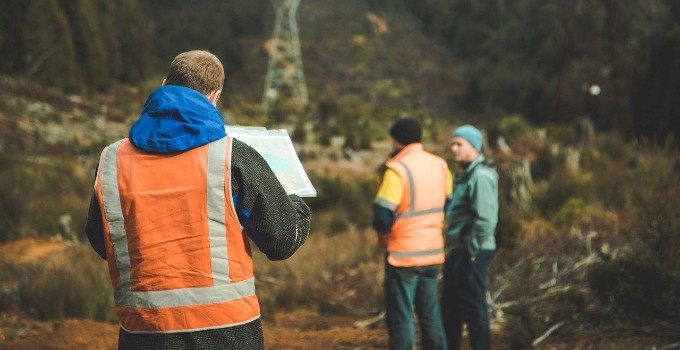
Investing time and energy in planning for project approvals makes it more likely that your project will get off the drawing board and into reality. The following principles can help you smooth the process and avoid common pitfalls.
Understand constraints and impacts
The planning system tends not to differentiate between various forms of renewable energy generation, constraining all forms due to the perception and experience of those forms with greater perceived impacts (such as wind farms). Yet each project is unique, as is every piece of land – so each development will bring different values, impacts and benefits into play.
Getting the earliest possible understanding of the environmental and approval constraints over the development site will help reduce risk and avoid a later re-design.
All developments have potential impacts. Communities may be concerned about potential impacts on human health, biodiversity, heritage impacts, visual amenity, noise, changes in land use, construction impacts, just to name a few. However, it is generally ecology and heritage that make or break a project because there may be underlying regulatory requirements associated with existing overlays that prohibit or limit development.
Particularly in the Commonwealth jurisdiction, but increasingly across all state jurisdictions, developers must clearly demonstrate how the project has avoided and reduced impacts, rather than merely offsetting them by purchasing parcels of land elsewhere. Some states actually require the developer’s option analysis process to be documented. Only when the authorities are satisfied that the project has actively avoided and reduced impacts, will they negotiate what mitigation methods are preferable.
Communities are often concerned about visual amenity, so this analysis should be done early as part of identifying ‘red flags’ or constraints. When used properly, visual impact assessment can be a powerful way to design sensitively and responsibly, reducing impacts on views.
The overall impact assessment often takes into account the context of the new development, such as whether it is in pristine environment or existing built-up or industrial areas. An increasing trend is to redevelop brownfield sites for renewable energy or storage projects, instead of focusing solely on greenfield prospects. There is enormous potential to re-use existing infrastructure, former industrial sites or degraded sites, such as mine sites which are no longer viable or operational or former thermal power station sites. This can complement the existing management and rehabilitation regime for these sites which often have very poor environmental conditions, making projects rewarding for the developer and the community.
Get to grips with the regulatory landscape
Depending on the scale, location and potential impacts of the project, approvals may be required at the Commonwealth level (through the operation of the Environment Protection and Biodiversity Conservation Act 1999), the state level (through the implementation of state environmental protection legislation), and the local level (through the implementation of a local development control plan or planning scheme).
These three levels interact differently in each state and for different processes. Some states have very streamlined and integrated approvals processes for large-scale projects which can coordinate Commonwealth requirements and facilitate local government discussions, making the process easier for the proponent or consultant. In other states, consultants often coordinate the different levels of processes, navigating the greater potential for conflicting or onerous requirements across the Commonwealth, state and local level.
Don’t launch into writing the approvals document without first conducting a mapping exercise and developing an approvals strategy. The approvals strategy helps map out all Commonwealth, state and local government requirements across each project component (e.g. a transmission line on a road reserve will often have different environmental values and require different approvals than a transmission line across a farm paddock). This will help you understand what approvals will likely be required and where dependencies exist. Your approvals strategy should be a live document, reviewed whenever there are changes to the project or legislation.
Building a transparent and honest relationship with the regulator/s is a worthy investment, and a consultant can lead this relationship for you. By listening to the regulator/s, paying attention to their advice, and changing the project’s design accordingly, a developer may be able to pre-empt or avoid conditions being applied to the project.
Develop a solid submission
Once the approval requirements are confirmed, detailed technical studies are essential for clearly demonstrating that the issues are understood and that the development (and any mitigation or management measures) is appropriate.
Target the application documentation to match and address the requirements of the relevant development control document, drawing on the conclusion of the technical studies. Include a summary of the proposal that identifies the key issues and mitigation measures, as well as the detailed technical studies underpinning the planning assessment.
Manage conditions
When permits are issued, it is common for there to be a number of conditions requiring further actions or additional documentation. Once you have a permit, create a conditions management plan to lay out clearly what all parties involved in the project need to do. Determine when the conditions apply (e.g. pre-construction, construction, post-construction or during operations) and who should be responsible. This will reduce the risk of not complying, which may be an oversight but could result in action by the responsible authority or, in some cases, lapsing of the permit.
Take the community with you, right from the start
It is important to differentiate between planning for and planning with communities. Those who will be impacted – whether positively or negatively, and over the short or long term – need to be involved in the process. A developer, owner or operator should identify and meet as many different stakeholders in the community as possible to get to know their individual interests and needs.
Engaging with the host community early in the development stages is key to a successful project and developers may be required to demonstrate that they have done so, even before submitting a permit application. This will help assure authorities (and potential buyers) that the project has a ‘social licence’ to operate.
By engaging early, the developer will have time to explain how the technology works, outline the construction process, and conduct a social risk assessment. Engagement should preferably be face-to-face and consistent. People are far more likely to accept projects when they feel that they have been included, heard and respected.
A particular consideration for large-scale developments is that sites are often located in areas outside of council jurisdiction, some of which are state-owned and can be subject to existing leasing arrangements. More remote areas also have greater potential to involve existing Native Title rights. Planning with genuine respect and acknowledgement of Indigenous communities is crucial, but often undervalued. First Nations/traditional owner groups should not be treated like any other stakeholder but as a land-owner (because they are, and governments are increasingly recognising this).
The task of building the community’s confidence in a project is sometimes difficult. The best approach is to communicate any foreseeable short-term and long-term impacts as early as possible and in an open and non-defensive manner. Listening to the community and working together to identify social and environmental risks will help build trust between the project team and stakeholders, and result in a development the community are proud of.
Give your project the beginning it deserves
Ultimately, there’s nothing to be gained by cutting corners or rushing these processes. Your best chance of planning success is through exploring and understanding – at the very earliest opportunity– the development control provisions, permits, consents and the levels of assessment that are required, obtaining high-quality and comprehensive specialist studies, and getting off on the right foot with the project’s stakeholder and community. Your project and your reputation will benefit from doing at least what is required and, preferably, even more. What you put into your ‘once upon a time’ will dictate whether you can reach a ‘happily ever after’.
If you would like to discuss how Entura can help you with your environmental or planning project, please contact us.
About the author
Bunfu Yu is an Environmental Planner with experience across multiple Australian jurisdictions, including Commonwealth, Victoria, New South Wales, Tasmania and Queensland. She advises on a variety of land use and development issues, and scopes environmental and planning projects with a focus on water, energy and electricity infrastructure for a range of clients, including private developers, state utility providers and government agencies. She has qualifications in planning and science, is a sessional lecturer at the University of Tasmania, and serves as a committee member for the Planning Institute of Australia Tasmanian Division and a member of the National Policy and Advocacy Committee of the Planning Institute of Australia.
MORE THOUGHT LEADERSHIP ARTICLES
Keeping close tabs on your dams
Access to quality long-term records is crucial for dam safety. Read what our specialists have to say about keeping your records under control.

The ANCOLD (Australian National Committee on Large Dams) guideline on dam safety management recommends regular reviews on different timescales – including routine inspections undertaken by the operator (daily to monthly), intermediate inspections by a dams engineer (annually), comprehensive inspections undertaken every five years by a dams engineer and other specialists (e.g. mechanical engineers specialising in gates and valves), and dam safety reviews at least every 20 years. For these less frequent dam safety reviews, the ability to access quality long-term records is crucial.
Because dams are such large structures with a very long service life, they need to be reviewed regularly to ensure that any community risks are mitigated appropriately. Dam safety reviews assess the current condition and performance of the dam in depth, and reassess the design and construction of the dam against modern standards.
When the time comes to conduct a dam safety review, dam owners need good records at their fingertips. Poor recordkeeping can lead to significant extra costs and time to conduct the review, but can also compromise a dam owner’s duty of care.
To properly analyse the performance of a dam and assess it against modern design and construction criteria, the dam engineer needs a thorough understanding of the original design and construction, any modifications to the dam since its original build, and a complete set of surveillance and monitoring data.
For some dam owners, when the time comes to complete a dam safety review, all or some of the records are missing – they may have been lost or destroyed through corporate restructures or a failure to understand the importance of the historical records, or the records may never have been created at all.
Which records are important?
In our work as dam safety consultants, we’ve encountered numerous cases in which poor recordkeeping – across many areas and disciplines – has resulted in costs for our clients. The following are critical records to keep in good order and close to hand.
Hydrological records
Records from stream flow and rainfall gauges in the dam catchment provide key hydrological information for dam safety reviews. The streamflow data can be used directly to statistically analyse the probability of the more frequent floods. It can also be used to calibrate rainfall runoff models used to estimate extreme floods for which dam spillways need to be designed. Without this data, flood studies are more difficult because data needs to be extrapolated from nearby catchments. This not only adds cost, but also reduces the reliability of the data, which may potentially lead to oversizing or undersizing the spillway.
Dam break and consequence assessment records
In Australia, dams are classified according to the consequences of failure – from very low (minimal impact on the community, environment and dam owner’s business) to extreme (catastrophic impact on the community, environment and dam owner’s business). The consequence categories are used to define the level of design (e.g. spillway capacity), the surveillance and monitoring requirements and, in some states of Australia, the regulatory requirements. Where these studies are not available, ‘rule of thumb’ methods may be used to estimate the inundation extent as an interim step, but much more confidence can be obtained by using a flood hydraulic modelling package with good survey data. These studies should be reviewed regularly for currency, especially when development is occurring in the downstream catchment.
Geological and geotechnical records
A detailed understanding of the geology of the dam foundations is essential for assessing the risk of excessive leakage (piping), the presence of any low-strength zones that could cause instability, and the potential for landslides around the reservoir that could cause a wave able to overtop the dam. Investigations undertaken before construction as well as mapping and recording of the foundation during construction provide the best possible information for assessing these potential failure modes.
When these records aren’t available, it is often necessary to undertake extensive and expensive geological investigations into the foundation of the dam, usually while the dam is operational. Such investigations need to be carefully planned to preserve the safety of the dam.
The starting point is review of existing geological records of the site, including geological maps, aerial photographs/satellite images and geological/geotechnical reports from nearby locations. This should be followed by geological mapping to confirm the information obtained from the desktop search, including the rock types and joint and defect orientation spacing. From this, a preliminary geological model of the site can be developed. To reduce the uncertainty of the model, intrusive test pitting and drilling investigations can be conducted. Careful consideration of the dam safety risks of undertaking these investigations is needed, including contingency plans to deal with unexpected conditions (e.g. high-pressure water intersected in boreholes or instability of ground around test pits). ANCOLD has produced a very good guideline on geotechnical investigations of dams, their foundations and appurtenant structures, which should be considered an essential guide for dam owners.
Design records
If records of original design information are unavailable, the dam safety reviewer won’t be able to fully understand the designer’s intent and assumptions. The information required includes the design drawings showing the overall arrangement and key dimensions, as well as the specifications and the design report. If drawings aren’t available or are illegible due to poor quality scans, detailed surveys of the structure may be required to determine the actual constructed geometry. To assess the stability of the dam, the material properties of the dam will be required; but if no data is available, sampling and laboratory testing may be needed.
Construction records
To understand the types of defects that may be present in the dam, it’s important to know how the dam was constructed, whether it was actually constructed to the design, and what issues were encountered during construction. Key construction records include construction reports detailing progress, changes to the design and issues; results of quality testing; as-constructed drawings or mark-ups on the design drawings; and photographs of the construction process. If these records are not available, it may be necessary to confirm as-constructed details through survey, sampling and laboratory testing.
Surveillance and monitoring records
Time-series data – such as regular inspection reports, photographs and instrumentation readings – are invaluable in establishing if there are trends or changes over time that may indicate deterioration of the dam. Without these long term records, it can be difficult to assess whether observed features are longstanding (e.g. present since construction) and what recent developments may indicate about the condition of the dam. Without the full time-series of monitoring data, it can be difficult to observe trends and to understand the relationship between various performance parameters (e.g. leakage versus reservoir level).
Keeping your records under control
If adequate records can’t be located, a dams engineer will need to spend a great deal of time searching archives or undertaking investigations to build a historical picture of the design and construction of the dam in order to assess its safety. When records are well managed, dam owners can save time, money and frustration. To keep your records under control, make sure that they are:
- as complete as practical – which may require extensive archive searches and investigations to fill in the gaps
- securely stored (electronically as well as the original paper records) and retained for the long term (so investigations don’t have to be repeated)
- readily retrievable through efficient indexing and archiving systems.
A good dam may outlast generations of engineers, operators and owners. This makes recordkeeping a fundamental part of maintaining the safety and performance of the dam over its long service life and a key responsibility of every dam owner as part of your duty of care.
About the author
Paul Southcott has more than 34 years of experience in civil and dam engineering, as well as expertise in geotechnical, foundation, structural, hydraulic and hydropower engineering. Paul’s dam engineering experience spans geotechnical and hydrological investigation; feasibility and options studies; concept, preliminary and detailed design; engineering assessment, consequence assessment and risk assessment; safety reviews; monitoring and surveillance; and emergency planning. He has extensive experience in dam risk assessment and was a member of the ANCOLD committees that issued the Guideline on Consequence Categories for Dams in 2012 and drafted the Guideline on Geotechnical Investigations for Dams. Paul pioneered the development of a dam risk assessment methodology for concrete-faced rockfill dams (CFRD). He was the Engineers Australia (Tasmania Division) Engineer of the Year in 2021.
MORE THOUGHT LEADERSHIP ARTICLES
Field investigations in remote locations – factors for success
Conducting field investigations in remote areas is no ‘walk in the park’. On top of the investigation activities themselves, there are the complex logistics of getting personnel and equipment into hard-to-reach places, the imperatives of maintaining safety and managing community expectations, and the significant challenge of conducting works but leaving minimal impact on the landscape.
‘Leave no trace’ may not be too hard a goal when you’re heading off on a simple bushwalk. However, when it comes to conducting field investigations in remote areas with heavy specialist equipment, ‘treading lightly’ can be extremely challenging – but it is something Entura is committed to.
Entura has recently delivered geotechnical investigations for Hydro Tasmania’s feasibility study into the potential for pumped hydro development in some very rugged, remote country in western Tasmania. This is how we did it, and some success factors we can share for field work in these conditions.
Planning
Planning and contract expertise is paramount for successful execution of any project, but particularly so in remote locations. It’s important to take the time at the very beginning of a project to really understand the entirety of the scope and the project objectives. To reduce the risk of unwelcome surprises and unwanted variances, spend enough time on the ground before the works commence so that you can be sure that all the elements have been considered.
This is also the time to gain a full understanding of all the permits and approvals that will be required, the lead time to achieve them, and the range of agencies and key stakeholders who need to be engaged right from the earliest stages.
It will take time and consideration to engage carefully with all contractors to understand their expertise, capability and willingness to undertake the works; but the effort to find the right contractors will be more than repaid by the improved outcomes.
Our project involved multiple drilling investigations to 600 m in 3 separate and remote locations, including a deep ravine located between Lake Plimsoll and Lake Murchison in the heart of Tasmania’s West Coast. The goal was to achieve a clear understanding of geological conditions within the region, which had previously been identified as a fault zone. Our planning needed to encompass all the necessary desktop studies to understand as much as possible about the environment, the stakeholders, the regulations and requirements, and the conditions our contractors could expect, all in advance of sending personnel and equipment into the remote site.
The key to our success in the project was leaving no stone unturned in the planning phase, and using these preliminary insights to choose the right contractors for the job, with the right equipment and skills to achieve our objectives. When things go smoothly and look seamless or simple from the outside, it is usually because of the significant investment of effort in detailed, logical planning right at the start.
Site access
Remote access can be extremely difficult, so the success of a project will depend on establishing practical, efficient and low-impact routes at the earliest stages of planning. Time is money, so contractors will need the easiest and quickest access to the site that you can achieve without compromising on safety or the environment. This will need early and thorough engagement with land-owners to identify constraints, requirements and options. Selecting the best access options will rely on a deep understanding of the biodiversity and heritage values of the site through desktop analysis combined with intensive field observations and data collection.
We selected access routes using a variety of considerations, including what equipment would be required on site, the duration of investigations, the significance of data we gained in the planning stage, analysis of the costs and benefits of options, consideration of the longer term benefits to the land-owners, and consideration of future works.
Ultimately we used a combination of access methods including foot tracks, temporary and permanent roads, and helicopter access. Again, it was crucial that we chose the right contractors who could cope with the conditions and understand the constraints. Our excellent local contractors were integral to our success.
Environment
Conducting works in a region of high natural values demands deep consideration of strategies to avoid or reduce long-term impacts and of what remediation efforts will be necessary and effective.
In one particular instance, we identified and implemented a range of strategies to create a 1.2 km foot-access track in a very sensitive and damp area that was likely to become muddy and highly degraded under the pressure of constant foot traffic during the duration of the works. To protect against this, we hand-cleared the site, developed suitable drainage channels, stabilised the banks, then deployed geo-fabric matting onto which we laid a top coat of clean and approved local woodchips. This innovative solution proved highly successful: it provided solid, safe and reliable footing, excellent drainage and made clearing up the site relatively easy and efficient as the woodchips could be wrapped in the geo-fabric matting, bagged and removed from the site. Once the works were completed, the cut-back vegetation was relatively unscathed, and was able to re-shoot and re-establish rapidly.
Stakeholder and community engagement
Continuous and inclusive community and stakeholder engagement, tailored to the particular community or stakeholder segment, is critical for the success of any project – and the earlier it begins, the better. In our project, we went out on the front foot, building a shared understanding of our objectives, making detailed information available and inviting stakeholders to raise any concerns with our team. We even facilitated site visits for key stakeholders to gain a fuller understanding of the works and build trust.
Many project proponents will tell stakeholders and communities that they want them ‘to come on the journey’ – but we walked the talk, inviting stakeholders to check our milestones, come along to inspect aspects of the work, and to share their feedback.
Cultural heritage
Over a sustained period, Hydro Tasmania has undertaken intensive desktop and field analysis of particular regions and their history. In addition to this rich database of information, Entura has access to specialist cultural heritage consultants who document heritage sites and support us to manage these sites in accordance within the appropriate legislation requirements. Early notification and thorough assessment early in the planning phase indicates whether a heritage site or specific location is likely to be encountered, which enables processes to be established to mitigate heritage risk, minimise site damage and, in some instances, plan for total avoidance and re-siting of works.
In our project, the early engagement of reputable consultants gave us confidence that any areas of significance had been identified. We clearly defined these areas of significance and protected them from any impacts from the works.
Water supply
Drilling investigations require a significant volume of water every day. But not all, if any, remote locations have a ready supply, and if so it’s usually some distance away. Geotech drilling investigations require up to 30,000L/day depending on ground conditions, so the ability to capture and re-circulate water and reduce sediment discharge to the natural environment is crucial in remote locations. Sometimes this needs a bit of innovative thinking to achieve.
Working in a naturally wet environment and on a hillside enabled us to trap natural run-off and control flow to a small header tank (44 gallon drum), then pipe the water to 3 x 10,000L tanks at a flow rate over 24hr period. Three sandbags, float switches and low-impact plastic irrigation pipe allowed us to supply the drill rig with water for 90% of its operation, only having to stop temporarily while drilling during a 5-day period without rainfall.
The creation of a small pond on a steep downhill slope minimised environmental impact downstream and allowed a steady flow of water to continue over the micro dam. The header tank minimised air locks, while tank float switches prevented overflow on the drill site.
By capturing water above the work site, we eliminated the need for extra foot tracks to the creek down in the valley or the need to pump and re-fuel a diesel water pump or to truck water in over 2 km.
Climate conditions
Projects sometimes can’t wait for the perfect time of year to commence. In Tasmania, this brings the challenges of adverse weather conditions and extreme events such as snow and bushfire – even within the same month!
Our remote projects faced these challenges, including frozen water pipes, snowed-in access routes and the risk of bushfire. Planning, watching the weather, and evacuation plans became a daily function.
At one particular location we soon learned that water freezing overnight in pipes could cause significant delays in the morning. Our quick solution was to drain the pipes at night to avoid the problem reoccurring.
To mitigate risks in hot conditions, we had safety processes and equipment in place, such as no-work orders in extreme hot and windy conditions, evacuation plans, safe areas, designated exits, fire pumps and satellite communications.
Safety
Safety should be a top priority on all worksites, and working in very remote areas involves an extensive range of safety considerations. Our workplace health and safety plan provided an overarching document to support the program of work, providing a framework of safety planning, processes and equipment, and careful consideration of the range of potential controls. Each of our contractors developed their own safe work method statement for their own tasks.
In our project, the key identified risks were driving long distances in remote areas and working in areas at risk of bushfire. However, adding to the complexities of safety considerations was that our project was conducted in the time of COVID-19, which necessitated extra hygiene requirements, COVID testing, travel restrictions and the need to immediately stop work when any symptomatic individuals were identified. Ultimately, by implementing our safety plans and processes, we completed the project with no significant safety incidents.
Team work and problem solving
In such complex conditions, the ‘glue’ is good relationships built on trust, shared expectations and objectives, accountability and confidence in each other. This enables collaborative problem solving to overcome challenges or changes in the project. However, contractors often don’t know each other and may be meeting for the first time onsite, so these trusting relationships need to be built quickly.
This requires a level of frankness and transparency among all parties, with honest and open analysis of where things are working well, where there’s room for improvement or where more support is needed.
Particularly in remote areas, it is essential that people don’t feel isolated or alone. Regular drop-ins can help, providing continuity and fresh eyes on site.
Some of the success of a remote project will come down to experience, but just as much depends on good teamwork, regular and open communication, choosing great contractors, and meticulous planning. Not every on-site circumstance can be foreseen, but with these success factors in place, you’ll have a solid foundation and the flexibility to solve challenges on the ground as they arise.
Written by James Butler.
MORE THOUGHT LEADERSHIP ARTICLES
Dam Emergency Dewatering Outlets: A ‘Must Have’, or a ‘Nice to Have’?
One contributing factor for dam safety is the ability to rapidly lower the water level in an emergency. But how can dam designers and owners appropriately determine the need for a dewatering outlet or its optimum size in the absence of a consistent international standard?
Dam safety must begin long before the dam is filled
Dam owners are responsible for the continued safety of dams throughout their life cycle, and for maintaining acceptable levels of risk exposure for downstream communities. As we’ve highlighted in previous articles, dam safety can protect lives and drive efficiencies, having a robust approach to dam safety management must be a top priority for dam owners, regardless of the size of the dam.
A dam safety program should be underway before a dam is filled for the first time, especially if there is significant downstream consequences. This dam safety program should include details such as operational instrumentation, regular routine inspections, and personnel and systems in place to make the necessary decisions should any unusual observations occur. The dam safety manager is a key role required to escalate and make decisions in relation to this. In addition, the key dam safety documentation should have been prepared, including a dam safety management plan, dam surveillance plan, dam operation and maintenance plan, dam safety emergency plan, and evacuation plan. We’ve talked about these elements previously in our ten-point plan for safer dams.
Triggers for dewatering
During unusual events such as the first filling of the dam, major floods or major seismic events, the dam needs heightened scrutiny. If visual inspections and instrumentation monitoring indicate any sudden increase in dam deformation, leakage or internal pressures, it is important that an incident is raised and investigated. If the change progresses and may be developing into a dam safety incident, the risk mitigation strategy may be to reduce the reservoir level (i.e. the water loading on the dam).
To rapidly reduce the reservoir level, a low-level, emergency dewatering outlet is usually needed.
The need for an emergency dewatering outlet
It is good practice to provide an emergency drawdown facility in a dam. This enables the reservoir level to be reduced in a dam safety emergency, which lessens the loading on the dam and the volume of water behind the dam.
The purposes of an appropriately sized low-level outlet are (1) evacuation of the reservoir if emergency conditions occur, or inspection, maintenance and repair of the dam and appurtenant works that are normally submerged, and (2) controlling the rate of reservoir rise as required by reservoir filling criteria.
There are examples in Australia and internationally in which no emergency dewatering outlets are incorporated into the dam, or the total outflow capacity provided is inadequate. Yet there is no consistently adopted international standard for the requirement and sizing of an emergency dewatering outlet. This gap in consistent guidance is of concern, given the importance of dewatering outlets for dam safety.
Lack of consistent international standards for dewatering outlets
The International Commission on Large Dams (ICOLD) provides no reference to a specific drawdown rate; however, a number of its technical bulletins do refer to a bottom outlet to empty a reservoir.
ICOLD Bulletin 49a – Operation of Hydraulic Structures of Dams (1986) states: “It is very important for the dam operator to have outlets enabling the reservoir to be drawn down. While bottom outlets do not readily fit into some sites (as with very large reservoirs on very large rivers), there are still many cases where their absence is regrettable or where they are too small or ill designed … Besides allowing the reservoir to be emptied in periods of low river flow, bottom outlets can also provide fine control of the reservoir during the most critical period of a dam’s life, during the first filling, and draw down the level whenever necessary thereafter.”
Some guidance for emergency drawdown was given by the United States Bureau of Reclamation (USBR) in 1990, suggesting drawing down the reservoir volume to either 10% of the storage or 50% of the height in 1 to 4 months.
However, as these guidelines suggest, it may be impractical to provide the drawdown capability to meet the criteria and guidelines for certain projects. Some reservoirs may be just too large for short-term evacuation. The USBR guideline recognises that decisions relating to emergency dewatering outlets should be made considering the risks that the outlet would help to mitigate and the costs to include such an outlet.
Promoting a risk-based framework
A more recent guideline on emergency dewatering outlets for dams is the UK Environmental Agency’s Guide to Drawdown Capacity for Reservoir Safety and Emergency Planning (2017). This document provides guidance on a consistent methodology for assessing the adequacy of existing drawdown capacity at reservoirs in the UK, based on the judgement of an experienced dam engineer. This judgement should consider the proposed basic minimum recommended standards, the consequence of dam failure, the vulnerability of the dam to rapid failure, the time it may take to detect symptoms of failure and to activate drawdown, the time required to draw down the upper third of the reservoir, the ability to keep the reservoir down for repairs, and precedent practices.
The guidelines promote a risk-based assessment, considering options for mitigating those risks. The guidance document states: “The cost of increasing drawdown capacity is compared to the reduction in risk to life achieved, and only implemented where the cost is proportionate”.
These UK guidelines therefore encourage a risk-based framework for evaluating the drawdown capacity of any emergency dewatering outlet. However, the UK has very few very large reservoirs on large catchments, and the guidance provided may therefore not be applicable to very large reservoirs.
What about larger reservoirs?
The challenge in applying the existing international guidance is when the reservoir is very large and/or the dam is located on a very large river. These larger reservoirs are often associated with hydropower projects. This is recognised in the guidance documents discussed above; however, an alternative approach is not provided.
Both the UK and USBR documents do suggest, though, that the reduction in risk created by an emergency dewatering outlet should be weighed against the cost.
Given that an emergency dewatering outlet is not always possible or practical (particularly for large reservoirs), how can risks be mitigated in other ways?
Seven considerations for safer dewatering decisions
When determining whether a dewatering outlet is a ‘nice to have’ or a ‘must have’, systematically consider the alternatives through a risk-based framework and document the decision. With or without an emergency dewatering outlet, it is crucial to develop a robust design, fully consider dam safety, and appropriately mitigate risks to acceptably low levels.
Think about these seven points:
- Consider the inclusion of an emergency dewatering outlet early in planning and design.
It is often easier to incorporate an emergency dewatering outlet into the dam’s general arrangement in the early stages of the design process, rather than later when the dam type has been locked in and all the various components (spillway, intake, diversion) have been located and defined. If it is easy to incorporate, it is good practice to include.
- Consider the risk position without any emergency dewatering outlet.
The main purpose of the emergency dewatering outlet is to be able to take some mitigating action in a dam safety emergency. It is therefore important to determine the risk position of the dam without an emergency dewatering outlet, and evaluate whether this risk is acceptable based on the downstream consequences. Every dam site is unique, so all potential failure modes for this particular dam need to be considered in the risk assessment. If the risk position is not acceptable, alternative options for mitigating the risk should be considered and built into the design and/or operational procedures. Adopt a robust design with sufficient redundancy to mitigate the risks identified through the potential failure modes analysis.
- Understand the potential benefits of an emergency dewatering outlet.
Before deciding that it is too costly to construct an emergency dewatering outlet, at least consider the potential benefits. Gain an understanding, from a holistic project perspective, of the hazards/risks that an emergency dewatering outlet could mitigate. Consider the importance of controlling the rate of initial filling of the reservoir, the ability to evacuate the water from the reservoir at a meaningful rate to make a difference in a dam safety emergency, and the ability and ease of repairing issues below reservoir level by lowering the reservoir rather than undertaking repairs underwater.
- Assess the risk benefit of an emergency dewatering outlet against the cost.
Carefully evaluate the reduction in risk due to the presence of an emergency dewatering outlet compared to the cost – is there a strong justification or not? Even if a full-capacity dewatering outlet is not possible, consider the risk benefit against cost for what is Compare the risk difference ‘value’ with the cost of the emergency dewatering outlet. This will inform a conversation about whether the ‘value’ justifies the cost, which is a strong basis for a sound decision.
- Develop contingency plans for the future.
If there is no emergency dewatering outlet that can enable the reservoir to be emptied for repair works, consider what repair actions may be required during the life of the dam. Ask the questions: What might go wrong? How would we rectify that if we cannot dewater the dam? and Is there anything else that we could build into the design to make this easier? This is ‘safety in design’ thinking, and documenting these high-level contingency plans in the operation and maintenance manual will help those managing the dam in the future.
- Document and communicate the decision.
Document the entire decision process and include the reasons for any decision. All key stakeholders should be aware of and accept the ramifications of any decision. Your organisation should have a robust process in place to assist this decision making process and ensure appropriate consideration in relation to an emergency dewatering outlet. The appropriate dam regulatory body will also need to support and accept the decision.
- Have a robust dam safety program in place.
Any dam with significant consequences downstream (as defined by ANCOLD Guidelines, or similar) should have an appropriate dam safety program in place. If an emergency dewatering outlet is not part of the facility, it is important that the other dam safety risk mitigation strategies identified in point 2 are implemented. The dam safety emergency plan should clearly state the actions to be undertaken in a dam safety emergency, as well as who is responsible for them.
A dam safety emergency dewatering outlet can enable a dam owner to be proactive in a dam safety emergency, and help to maintain or reduce the dam safety risk. As such, it is always a nice thing to have as part of a dam facility, and it should, ideally, be included in any new dam. However, if it is not possible or practical to include a dewatering outlet, be sure to make careful, considered decisions based on a comprehensive understanding of risks and consequences.
If you’d like to discuss how we can assist you with planning, designing and constructing safer dams, please contact Richard Herweynen, Paul Southcott or Phillip Ellerton.
About the author
Richard Herweynen is Entura’s Technical Director, Water. Richard has three decades of experience in dam and hydropower engineering, and has worked throughout the Indo-Pacific region on both dam and hydropower projects, covering all aspects including investigations, feasibility studies, detailed design, construction liaison, operation and maintenance and risk assessment for both new and existing projects. Richard has been part of a number of recent expert review panels for major water projects. He participated in the ANCOLD working group for concrete gravity dams and is the Chairman of the ICOLD technical committee on engineering activities in the planning process for water resources projects. Richard has won many engineering excellence and innovation awards (including Engineers Australia’s Professional Engineer of the Year 2012 – Tasmanian Division), and has published more than 30 technical papers on dam engineering.
MORE THOUGHT LEADERSHIP ARTICLES
NEM connections, complexity, risk and tolerance: achieving a balanced approach to grid connection
With the current bow wave in publicly announced emerging and committed storage, wind and solar farms in Australia’s National Electricity Market (NEM), it is now more important than ever that your connection application processes are rigorous and efficient.
This article charts a path of least resistance within the framework of the Australian Energy Market Operator (AEMO) for connection, while also pointing out more effective approaches you could consider. The path of least resistance requires more upfront commitment of resources to ensure the application eliminates doubt or uncertainty. Other approaches take a more balanced approach to risk, accuracy and allocation of effort across the project development timeline.
Maintaining flexibility of deliverables – It’s not all about being technical
Plant dynamic and steady state parameters are likely to change and assessment requirements will evolve from the start to the end of your connection application. This is a natural process of optimising plant performance and compliance under various system scenarios, but comes at the potential cost of disordered delivery of the connection application and delays to the project. Streamlining and clear version control of the report will allow all stakeholders to easily trace changes. Furthermore, with significant updates to PSSe and PSCAD modelling requirements, robust automation of re-assessments would minimise processing time but the changing assessment requirements make investing in such automation somewhat fraught.
Finding a balance between fundamental principles, good practice and efficiency
AEMO has gone to great lengths to increase the certainty and magnitude of expectations about power plant modelling and performance standard assessment. There are paths of least resistance and good practice that can help facilitate a connection application within this framework (which we’ve outlined in the left-hand side of the table below). There are also some fundamental concepts that could help to eliminate wasted effort in the connection application process (the right-hand side below). Achieving a balanced approach is key to an effective and efficient solution not just for an individual project but for the industry as a whole.
| Don’t be scared of EMT modelling | |
| Whilst RMS (root mean square) assessments are still crucial, network service providers and AEMO are requesting significant effort in EMT (electromagnetic transient) benchmarking and analysis of wind and solar farms. Hence, it’s best to benchmark respective EMT and RMS models (using software such as PSCAD and PSS/e) at early stages of the project to identify inaccuracies. Particular focus should be given to plant responses to network and PoC (point of connection) faults with varying grid strength to ensure ride-through requirements (S5.2.5.5) are met and that active power, reactive power and voltage responses are within tolerable ranges between RMS and EMT models. |
The industry (proponents and regulators) must consider which aspects of these models need to be accurate for the development of performance standards and the determination of grid compatibility. When the overall goal is a stable connection of plant, pragmatic engineering judgment is often more beneficial than a slavish pursuit of absolute precision. We should focus more closely on fundamental issues relating to control stability, such as loop gains and time delays, than on the accuracy of switching controller triggers and sensing. |
| Understand your connection point and surrounding network | |
|
We have previously discussed the issues of congestion and system strength and how they impact grid connection. These issues can result in plant MW constraints and non-compliant fault ride-through. It is also important to remember that system strength does not equal SCR (short circuit ratio). System strength is a combination of high impedance network, high concentration of asynchronous machines and lack of nearby synchronous generation. It is a location-specific artefact that adds to the importance of assessing your plant’s control (S52.5.13) and contribution to faults (S5.2.5.5) in network models. |
The strength or otherwise of the connection point must also be taken into account when considering whether the performance standards are reasonable. Issues such as fault current injection rates, rise and settling times, voltage regulation ranges and the like depend heavily on the surrounding network and often on other nearby generating units.
|
| Ride-through is not enough on its own | |
| Gone are the days of plant only being required to ride through PoC voltage dips for various periods of time. Recent versions of the National Electricity Rules require rigorous reactive current injection assessment including amount and rate of injection for varying voltage profiles, and for balanced or unbalanced faults. Hence, work is needed to tune the plant and inverter-based controls to meet these requirements (predominantly in clause S5.2.5.5) and maintain post-fault voltages within network tolerances (commonly 0.9-1.1pu). | These more technical requirements of the rules take an inordinate amount of work to achieve compliance with a particular performance standard across the range of operation and system events to which the plant will be exposed. A more standard test could be considered to benchmark the performance of the plant against a small and finite range of events. |
At Entura, we bring as much judgement and experience to the work of connection applications as we can. The process does not always reward this approach, but we maintain that understanding the intent of analysis, as well as the need and importance of it, allows us to target and emphasise some analyses over others – and this helps to manage the connection risks for our clients with a high level of efficiency.
If you’d like to discuss how we can assist you with your grid connection projects, please contact Donald Vaughan on +61 427 721 558 or Wayne Tucker.
About the author
Donald Vaughan is Entura’s Technical Director, Power. He has more than 25 years of experience providing advice on regulatory and technical requirements for generators, substations and transmission systems. He has worked for all areas of the electrical industry, including generators, equipment suppliers, customers, NSPs and market operators. Donald specialises in the performance of power systems. His experience in generating units, governors and excitation systems provides a helpful perspective on how the physical electrical network behaves.
What levels of flood protection and downstream risk are acceptable for cofferdams?
In previous thought leadership articles, we’ve argued that the downstream consequence of dam failure is a better measure of dam risk than the size of the dam. For example, saddle dams can often have significant consequences downstream, despite being smaller than the main dam. The same applies to cofferdams.
A cofferdam is a temporary dam that diverts a river during construction of the permanent dam. The cofferdam enables the main dam site to be dewatered and protected throughout construction. The river flows are diverted around the site through a diversion channel, conduit or tunnel, which has a certain flood capacity beyond which the cofferdam would overtop. Overtopping of the cofferdam could lead to failure of this temporary dam, and the ramifications of such an event depend on the volume of stored water behind the cofferdam and the consequences downstream.
There is greater scope to accept more risk in the design and construction of the cofferdam if the construction period is short, the cofferdam is relatively small and the downstream consequences are minimal. But if the cofferdam is a high structure with significant consequences downstream, what level of flood protection is acceptable?
This issue is common when constructing a dam on a large river. Despite the cofferdam usually being significantly smaller than the main dam, and although the risk exposure period is only the duration of the construction of the permanent dam, we must consider the life safety risk to the downstream community. If the downstream consequence is great, appropriate dam engineering principles and standards need to be applied to the design and construction of these temporary cofferdams to protect the downstream community from unacceptable risk during the construction of the main dam.
There is no consistent, appropriate international practice or standard for risks associated with handling flood during construction, be it for river diversion during construction of a new dam, or flood management during remedial works for an existing dam. The overall perception of dam engineers has been that higher risk levels are acceptable during short-term construction periods, compared with the long-term risks for the completed structure.
Traditionally, the flood capacity associated with the cofferdam and diversion works was based around the construction flood risk and became a cost optimisation problem, taking into account the lost time and damages that would be caused by overtopping. However, if there is a population downstream, we are talking about the downstream risk to life, which is no longer simply a financial issue.
The outdated Australian National Committee on Large Dams (ANCOLD) Guidelines on Design Floods for Dams 1986 proposed that the river diversion flood risk during the relatively short construction period of a cofferdam should be an equivalent order of safety to the recommended design flood relevant to the consequence over the life of the permanent dam. For a high-consequence-category dam with a construction period of 5 years, the guidelines recommended a 1-in-500-year river diversion flood capacity.
This is similar to the Brazilian guidelines given in the International Committee on Large Dams (ICOLD) Bulletin 170 – Flood Evaluation and Dam Safety (2018), where for each management stage of the river during construction, the flood capacity for the diversion works should be defined based on the risk of flooding downstream, taking into account the exposure time. The following table is based on the Brazilian guidelines, taking into account the risk to human lives downstream. If there is real danger of loss of human lives and there would be major damage to the works and their progress, then the annual risk of damage to the cofferdam should be less than 1%.
| Category | Annual risk of damage |
| No danger to human lives No provision for serious damage occurring to the work or its progress |
5% to 20% |
| No danger to human lives Some provision for significant damage to the work or its progress |
2% to 5% |
| Some danger to human lives Provision for significant damage to the work and its progress |
1% to 2% |
|
Real danger of loss of human lives Provision for major damage to the work and its progress |
<1% |
According to the ‘Diversion of Large Brazilian Rivers’ document prepared by the Brazilian Committee on Dams for the 2009 ICOLD Congress in Brasilia, the maximum river diversion flood capacity provided for major dam projects in Brazil was the 1-in-500-year flood. This is currently considered to be the internationally accepted standard for temporary cofferdams, but is it acceptable from the perspective of risk to life for downstream populations?
Owners need to consider the degree to which the risks imposed on the population by the dam during construction are acceptable and defensible. The current ANCOLD Guidelines on Selection of Acceptable Flood Capacity for Dams (2000) indicates that there is no consensus or risk standard that specifically considers whether risk-to-life criteria that relate to the overall risk over the long life of a dam are equally applicable to the short-term construction period. Compliance with various risk-to-life criteria would generally result in very conservative construction flood provisions compared with historical practice, and therefore should only be used to assist when considering and deciding on construction flood options. Although it may have been traditional to accept higher risks during construction than those acceptable for the completed dam in service, it is unlikely that such practice would be defensible in the event of a failure resulting in loss of life.
When deciding on the diversion flood capacity for the cofferdam arrangement, consider these elements:
- Consider the downstream consequences of an upstream cofferdam failure. This is particularly important if there is a downstream population that would be at risk. To quantify the impact of dam failure, dambreak assessment may be needed for the upstream cofferdam.
- Adopt an engineering standard for the cofferdam that reflects the risk. The higher the consequences downstream, the more stringent the design standards should be for the cofferdam, including the flood capacity of the diversion works. The design should consider the potential failure modes of the cofferdam (e.g. flood overtopping, internal erosion, etc.), and appropriate design measures should be adopted so that the chance of failure is appropriately low.
- Explore ways to mitigate the risk to the downstream community by:
- giving preference to lower cofferdam options with larger diversion flood capacity
- staging the flood protection works to minimise exposure time
- including emergency spillways or fuse plugs as part of the cofferdam design to control any downstream flooding
- preparing for major flooding events (as discussed below).
- Ensure that the cofferdam is constructed in accordance with the design and with a high level of quality assurance, especially if the cofferdam is demonstrated to be a high-consequence-category dam. The quality control (QC) and quality assurance (QA) processes on site must reflect the downstream consequences and risk to life. The higher the risk, the higher the justification for investing in appropriate QA/QC for the cofferdam construction.
- Have a dam safety emergency plan (DSEP) in place during construction. If downstream populations are at risk, it would be appropriate to have a DSEP for the cofferdam during construction of the permanent dam, along with appropriate monitoring of the cofferdam. Having a DSEP in place during construction is good practice for any high-consequence dam. By monitoring the dam, it is possible to identify early whether a dam safety emergency is developing. Early identification allows appropriate action to be taken as soon as possible, through intervention or early warning. This will help to mitigate the residual risk for the downstream population, and enable the contractor to intervene at the construction site. It will also provide clear lines of communication and understanding of responsibilities, should any potential dam safety emergency occur.
- Develop and implement good flood forecasting and warning systems. If a contractor has enough warning before the flood occurs, they can act to mitigate potential impacts. For example, construction workers and equipment can be removed from the area between the upstream and downstream cofferdams. Adequate warning time will dramatically increase the chance of survival should the dam fail. With appropriate rainfall stations and streamflow stations, flood prediction and flood warning models can be developed to provide increased foresight before a large flood event, so that there is more time to take pre-emptive action and inform any downstream communities.
No matter the size or the impermanence of a dam structure, always consider the downstream consequences. Even though a cofferdam is a temporary structure, it is still a dam, and its failure could lead to significant downstream consequences including risks to life. And that’s why we should consider applying the same dam safety practices to cofferdams as we do for permanent dams. In the end, it’s all about identifying and managing the risks and protecting what’s vulnerable downstream.
Find out what prompted Richard to write this piece below.
Entura has been involved in the decision-making process for many cofferdams associated with the construction of large dams on large rivers. If you’d like to discuss how we can assist you with planning, designing and constructing safer dams, please contact Richard Herweynen, Paul Southcott or Phillip Ellerton.
About the author
Richard Herweynen is Entura’s Technical Director, Water. Richard has three decades of experience in dam and hydropower engineering, and has worked throughout the Indo-Pacific region on both dam and hydropower projects, covering all aspects including investigations, feasibility studies, detailed design, construction liaison, operation and maintenance and risk assessment for both new and existing projects. Richard has been part of a number of recent expert review panels for major water projects. He participated in the ANCOLD working group for concrete gravity dams and is the Chairman of the ICOLD technical committee on engineering activities in the planning process for water resources projects. Richard has won many engineering excellence and innovation awards (including Engineers Australia’s Professional Engineer of the Year 2012 – Tasmanian Division), and has published more than 30 technical papers on dam engineering.
MORE THOUGHT LEADERSHIP ARTICLES
Green hydrogen: big buzz or good business?
Everyone in the energy industry is talking about green hydrogen, and the buzz just keeps on growing.
It’s been clearly demonstrated technically that with an adequate supply of water and renewable energy, green hydrogen can be produced through electrolysis for local use or for export – with no associated emissions. The role for green hydrogen is likely to increase in the global energy transition and the race to net-zero. There’s much to be excited about; particularly the potential to make valuable use of ‘excess’ wind and solar generation that would otherwise go to waste, particularly in off-grid systems.
A number of potential opportunities for green hydrogen are developing. The primary markets in Australia are large-scale export, particularly for the Japanese and South Korean markets, transport, and the mining and industrial sectors.
Of course, these are early days, and there will be many technical, economic and regulatory hurdles to overcome, just as there were at the outset of the journey into solar and wind generation and battery storage.
Is there a place for green hydrogen in the off-grid and mining sector?
In Australia, the mining sector may be a fertile ground for green hydrogen, not only because there is potential for multiple end-uses both on-site and off-site, but also because some of the hurdles may be lower. For example, the cost of energy for remote mining is generally high, and is vulnerable to disruption of fuel supply or price shocks. This is already leading to significant interest in off-grid hybrid renewable energy systems coupled with battery storage. The nature of high-penetration hybrid renewable off-grid systems is such that there is an excess of renewable energy. Adding green hydrogen capacity into a stand-alone renewable energy system could offer yet another layer of added value by capturing the excess to produce hydrogen.
This stored hydrogen could then have potential to fuel the mining transport fleet, to support processing, or to create product for export. The recent announcement that Rio Tinto, with support from ARENA, will investigate the use of hydrogen instead of natural gas in alumina refineries is an example of this thinking. With increasing shareholder demands on green mining, it may also lower the business’s carbon footprint and improve the ‘green’ brand positioning for the mine’s minerals or ore.
Can the hype become reality?
The primary hurdle for hydrogen to become viable is cost. But this is not a new challenge. The first projects in off-grid hybrid renewable systems needed funding support; the ARENA funding for projects such as King Island Renewable Energy Integration Project, Flinders Island Hybrid Energy Hub and Coober Pedy Hybrid Renewables Project was paramount for their viability. These projects were needed to demonstrate and, importantly, de-risk hybrid systems. With the confidence gained and with subsequent reductions in component prices, the mining sector is now forging ahead with a strong appetite for commercially viable hybrid renewable systems that need no extra funding support.
So, in a kind of history repeating, the first step towards making green hydrogen a reality on mining sites will be large-scale investment support or grant funding for demonstration projects. Just like in the period of hybrid system development, such projects are critical for building the industry confidence and knowledge necessary to escalate uptake.
Policy settings will also be instrumental in driving change. Investors, markets and communities are demanding ever-improving sustainability credentials from the mining sector; however, in Australia, regulatory structures such as emissions caps or financial penalties have not kept pace with consumer and financier expectations.
As we learnt on our journey with renewable hybrid systems, a key challenge will be the technical expertise to appropriately integrate all the elements of a hybrid renewable energy and storage system coupled with green hydrogen capacity. Having solid individual technology components is only one aspect of a successful deployment; integration of these elements is critical for maximising the renewable energy contribution or hydrogen use and for meeting stringent reliability and security requirements of the system. We have always found this need for an integration focus, be it in remote desert outback systems we have been involved with such as the Agnew Mine Hybrid Renewable Project deploying our hybrid control system, or in nations in the Pacific Ocean, or more recently in designing hybrid systems for Antarctic conditions.
Are there any answers, or just more questions?
No one has all the answers yet, but we must keep asking the right questions about the possibilities of including green hydrogen into the power system technology mix. It’s not only a matter of ‘how can we make the best use of excess renewables?’ We also need to carefully think through the many operational aspects, such as when is the right time to move to green hydrogen, how much is optimum, how would the introduction of green hydrogen affect the sizing of other system components, how would it affect the operation of other devices, how would the system dynamics be impacted, and just what is the right hydrogen technology to use at a given point.
These operational aspects aren’t so different from the questions we already consider on hybrid renewable projects, and they’re a crucial step towards achieving a technically viable and cost-effective arrangement. Equally important will be questions around access to water resources, environmental impacts and social licence, as well as other planning and regulatory requirements. Project proponents venturing into the green hydrogen frontier will need to grapple with a very wide array of issues beyond just the technology and cost – and should seek trusted advisors who have a sound understanding of the many considerations required for the success of any integrated renewable project.
Despite the uncertainties surrounding green hydrogen technologies and applications, new frontiers are exciting places – and we’re standing right on the threshold, with costs of green hydrogen technologies and processes expected to fall and become cost-competitive within a decade. If research and innovation proceeds through industry consortiums (such as the mining industry’s Green Hydrogen Consortium) and research bodies, if grant funding is made available to support early developments, and if early movers have the appetite to take some risks on large-scale projects (such as the HyEnergy Renewable Hydrogen Project and the Asian Renewable Energy Hub), we expect to see the available technologies mature, and to see green hydrogen move from being a good idea to something that could potentially make sound financial and environmental sense.
If you would like to discuss how Entura can support your journey towards green hydrogen or hybrid renewable systems (whether off-grid or on-grid, large scale or small), please contact Ray Massie on +61 408 571 057 or Dale Bryce on +61 409 984 447.
MORE THOUGHT LEADERSHIP ARTICLES
Make better decisions about hydropower and dam project options using risk-based multi-criteria assessment
How can owners or developers assess alternative options for hydropower and dam projects objectively and consistently? How can you maintain an appropriate balance among the environmental, social, financial and technical risks? If you place a value on the non-cost aspects of projects, how can you confidently assess the many criteria that your project options bring into play?
Traditional methods aren’t always best
The traditional approach to evaluating a range of alternative project arrangements and selecting a preferred option would be to apply a numerical ranking and weighting to a range of criteria to reach a weighted score for each project option (as shown in the table below). The recommended project arrangement would generally be the one with the highest weighted score. However, there are some major downsides to this methodology.
One problem with the traditional method is that the guideline for scoring can be fairly arbitrary (e.g. 1 = poor, 10 = excellent or 1 = high cost, 10 = low cost). Furthermore, scoring can be subjective and can vary from assessor to assessor. A project with strong scores in some areas may still achieve the highest weighted score even if it has low scores in other areas – and this can be accentuated by varying the weighting of individual criteria to contribute less to the overall score. Individual low scores can be very important as they could be show-stoppers. The averaging approach can therefore be misleading. The lack of transparency of this traditional approach can make it difficult to explain the results to internal and external stakeholders.
An alternative approach is a risk-based method.
A risk-based approach to multi-criteria analysis brings benefits
Compared with the traditional method, a risk-based approach may lead to a less subjective and more defensible assessment, as a consistent set of criteria is applied across all projects and/or arrangements. High risks remain very visible because there is no weighting or averaging. This process can be easily explained to internal and external stakeholders.
A risk-based approach uses a risk rating table, similar to that shown below, which can be used to rate the risks of many different types of hazards. This approach is familiar to many because it is used extensively throughout industry in many applications including, for example, safety management.
The standard risk assessment process is followed, which involves identifying the hazards, assessing the likelihood and consequence and therefore risk, identifying mitigation measures and re-evaluating.
Define the likelihood and consequences of risks
To undertake a multi-criteria assessment using a risk-based framework, you first need to develop a set of definitions for consequence and likelihood. The definitions should relate to a set of criteria, for example a hydropower project may consider natural environment, social and cultural heritage, reputation and client relationships, planning and approvals, and project delivery. For each criterion, define the consequence, ranging from a ‘Low’ through to a ‘Catastrophic’ outcome.
Developing these consequence definitions can be complex and require endorsement from within the owner’s or developer’s organisation. Many organisations already have a set of relevant consequence definitions as part of their corporate risk management processes. In some cases, these definitions may need amending (e.g. to accommodate a larger project); however, this could potentially be easier and more efficient than starting from scratch.
Developing a likelihood table is relatively straightforward. It simply requires a probability range to be associated with each likelihood definition, for example ‘Almost certain’ = 90–100%. The likelihood table can then be applied in subsequent risk assessments.
Once the consequence and likelihood definitions are agreed, you’re ready to undertake the multi-criteria assessment using a risk-based framework.
Nine steps towards a robust multi-criteria options assessment
Depending on the project, a multi-criteria assessment will often involve considering the cost, schedule and risk of each option.
The following checklist sets out a nine-step method to guide a risk-based multi-criteria assessment of alternative options for a hydropower, pumped hydro energy storage or dam project.
The steps set out above can be repeated to review other project options.
Ultimately, a degree of subjective evaluation may be needed, but this methodology will certainly support you to consider multiple criteria in your decision-making process, and is likely to highlight any major risks that may be considered to be show-stoppers. Using a risk-based approach and following the methodology above will set you on a solid path towards a consistent and defensible approach for your options assessment.
If you would like to discuss how Entura can assist with assessing your project options and their associated risks, including multi-criteria assessment of your hydropower, pumped hydro energy storage or dam project, please contact Phillip Ellerton on +61 439 010 172, Tim Griggs on +61 409 365 329 or Richard Herweynen on +61 429 705 127.
About the author
Tim Griggs is a specialist civil engineer with the hydropower and pumped hydro energy storage team at Entura. He has over 25 years of experience in the fields of civil engineering, dams and hydropower including feasibility studies, design and construction support, and has worked on projects located in Australia and the Indo-Pacific region. He is currently the hydropower design leader for Hydro Tasmania’s Battery of the Nation project that is undertaking feasibility studies into the development of a large pumped hydro energy storage project in Tasmania.
MORE THOUGHT LEADERSHIP ARTICLES
Multipurpose dams: maximum value for money?
When a dam is being considered, there’s usually a primary purpose. But are there also secondary purposes that can benefit the local and wider community? Have you thought about the potential additional economic development that can stem from a multipurpose dam?
Multipurpose dams combine two or more functions of traditional single-purpose dams into one dam infrastructure project. A multipurpose dam may combine storing and supplying water for irrigation, industry or human consumption; flood control; power generation and power storage; navigation; water regulation; environmental releases; climate change resilience; and recreational purposes.
The dam structure will be similar to a single-purpose dam, but the design will incorporate features into the dam and water infrastructure facility to accommodate different purposes. These may take the form of irrigation channels, power generation facilities or navigation facilities. Including various gates or valves can provide greater operational flexibility for floods or environmental releases for downstream community and environmental needs. A single-purpose project can become multipurpose during its planning stage, during operation, or in the long term when re-engineering becomes necessary.
Why consider multiple purposes?
Multipurpose dams are not a new concept; in fact, almost half of all dams are used for more than one purpose. There is a growing trend to consider multiple purposes when developing a dam, for several reasons:
- Dam sites, particularly storage sites, are scarce national resources (i.e. they are not unlimited), so it makes sense to consider how to extract maximum benefit from them when constructed.
- Dam infrastructure may commonly last for up to 100 years or more (i.e. they are considered a long-term asset). A dam represents a genuine long-term investment for the future, and so ideally should be viewed as such and incorporate the potential for flexible use over time.
- Multipurpose dams are very beneficial in developing countries, as the multi-functionality of the dam operations can contribute to a number of development goals simultaneously, such as energy, water and food security, economic development, and climate resilience. In 2016, the International Commission of Large Dams (ICOLD) recognised the importance of multipurpose dams in the release of the ICOLD Bulletin ‘Multipurpose Water Storage – Essential Elements and Emerging Trends’, which rightly links the common global needs of water, food and energy. The sporadic, spatial and temporal distribution of precipitation rarely coincides with demand, making storage essential for food supply, energy production, potable water supply and other water delivery services that depend on sizable, reliable, continuous and efficient supply of water.
- Climate change scenarios predict increasing variability in rainfall, impacting both yields and flood peaks. Droughts will affect agricultural production, and flooding is expected to increase due to more extreme weather events. With many regions of the world experiencing significant water stress, which is expected to be exacerbated by global warming, storage will play an increasingly critical role in bolstering a water system’s hydrological resilience. Dam projects should be designed with this necessity and value of storage in mind. Even in developed countries, we need our dam infrastructure to be ready to adapt to future changes as required. Taking change into account and considering multipurpose approaches will benefit new dam projects as well as projects that modify existing reservoirs.
Looking into the future
Multipurpose water storage projects pose additional engineering challenges when compared to single-purpose projects. Given the longevity of the infrastructure of large storage projects, planning professionals need to develop and implement solutions that will provide adequate flexibility to adapt to changes or to the diverse needs of multipurpose schemes. Scale, site selection and operational characteristics should be assessed through a long-term perspective, incorporating anticipated trends and emphasising adaptability so that future generations will inherit infrastructure that can evolve as the world continues to change.
There is no doubt that this sustainability principle is valid; however, determining how best to implement it in practice is not always easy. It is hard to anticipate and predict what will happen in a century (which is the expected life of many dams), yet this should not stop us during the early stages of the project from trying to assess long-term performance based on potential long-term scenarios (i.e. scenario testing).
Multiple perspectives for multiple purposes
Achieving the best outcome for a multipurpose dam is more likely when planners and engineers work together and closely consider the local community’s needs and the potential benefits to be gained. Both social and environmental needs should be considered, with detailed social and environmental impact assessments conducted.
Applying the principles of Integrated Water Resource Management (IWRM) in the planning process will help promote coordinated development and optimal management of water resources – furthering progress towards goals of social equity, economic efficiency and environmental sustainability. It is important to establish criteria by which to monitor the achievement of the multipurpose objectives and the post-construction impacts on the community and environment. Another important consideration is the manner of operation of the multipurpose reservoir, which will also be critical to achieving the range of its objectives.
What is a multipurpose dam worth?
A key planning challenge in multipurpose dam infrastructure is fully appraising the economic costs and benefits of the project. In many projects there’s a tendency to focus the analysis on the components that provide revenue streams (such as energy and water supply and irrigation tariffs) as these are most easily valued. However, this can underrepresent the project’s value across all of its multipurpose objectives, potentially resulting in suboptimal decision making or difficulty justifying the long-term investment. For example, a fundamental purpose of storage projects is flood mitigation – but flood mitigation does not generate a revenue stream. However, the economic value of flood control to a country (through avoidance of direct and indirect flood damages) often justifies the allocation of funds from the public sector.
Putting this into practice in Samoa
The Alaoa Multi-Purpose Dam in Samoa is a fitting example of the considerations presented above.
Samoa is a small tropical island country in the Pacific, and has been heavily affected by severe tropical storms. In 2012, Cyclone Evan caused extensive flooding and damage to the Apia region, the capital, where most of the population and economic activity is located. With such storms predicted to increase in frequency and severity as the climate changes, the Government of Samoa has adopted a programmatic approach to address climate-change-induced flooding. This includes the new Alaoa Multi-Purpose Dam, sized and designed with long-term climate scenarios in mind and to provide multiple functions. It aims to increase flood protection, improve the current water supply system’s seasonal reliability, and provide additional hydropower via installation of a small hydro facility.
The dam’s design considered multipurpose functions and climate change risks, and included small modifications to provide better outcomes. Climate resilience was ‘designed in’ by incorporating ‘dead storage’, providing sediment flushing capability, increasing the flood capacity, and including a number of gates and valves – all contributing to future flexibility of operation.
The intake to the small hydro station incorporated a station bypass valve for water supply. As well, a low-level outlet and a mid-level outlet were added to increase the operational flexibility of the dam to meet its three purposes. This also enabled both low-flow and high-flow environmental releases, and improved dam safety management. How the reservoir is operated will be significant in achieving the multipurpose functions. The dam’s flexibility will allow future adaptive modification of the operation to align with the changing demands of the reservoir.
The main purpose of the Alaoa Multi-Purpose Dam was flood retention and mitigation. Consequently, as we discussed above, a limited financial analysis could not justify the multipurpose project, yet the broader economic analysis could. However, the financial analysis indicated that the regular revenue stream from the small hydro’s energy production could increase the project’s sustainability once constructed. This revenue stream would contribute to the ongoing operation, maintenance and dam safety activities associated with the multipurpose project’s long-term operation.
Could multiple purposes be incorporated into your dam project?
Whether you are in the planning process or the early design phase for a new dam, consider whether your project could be modified to:
- achieve multiple purposes and increase the benefits of your dam project
- increase operational flexibility to allow your dam to adapt to future changes and demands
- improve the use of water resources for all needs, including the environment
- increase the climate resilience of your dam and the impact of climate change on its multiple objectives.
If you would like to discuss how we can assist you with planning and designing a multipurpose dam, please contact Richard Herweynen, Paul Southcott or Phillip Ellerton.
About the author
Richard Herweynen is Entura’s Technical Director, Water. Richard has three decades of experience in dam and hydropower engineering, and has worked throughout the Indo-Pacific region on both dam and hydropower projects, covering all aspects including investigations, feasibility studies, detailed design, construction liaison, operation and maintenance and risk assessment for both new and existing projects. Richard has been part of a number of recent expert review panels for major water projects. He participated in the ANCOLD working group for concrete gravity dams and is the Chairman of the ICOLD technical committee on engineering activities in the planning process for water resources projects. Richard has won many engineering excellence and innovation awards (including Engineers Australia’s Professional Engineer of the Year 2012 – Tasmanian Division), and has published more than 30 technical papers on dam engineering.
MORE THOUGHT LEADERSHIP ARTICLES
Is there still a role for small wind turbines in hybrid systems?
Many governments, industries and businesses worldwide are pursuing greater sustainability, reliability and affordability of their electricity sources, and transitioning away from fossil fuels.
In remote or isolated locations such as Pacific islands or remote desert mining operations and communities, hybrid renewable energy systems offer an effective option for meeting these energy goals.
Commonly, hybrid systems include a mix of solar PV, wind turbines, battery energy storage systems (BESS) and other enabling technologies. The inclusion of wind and solar generation in the mix is far more than an investment to earn money for the owner. These sustainable sources of energy reduce the traditional heavy reliance on fossil fuel, with its associated costs, insecurity of supply, and high emissions.
Why wind?
With the plummeting costs of solar PV and its ease of installation, is there still a role for wind turbines in the design of a hybrid system? Our answer is yes; however, there are a number of factors to consider when choosing the best configuration for your location and needs. It’s a combination of available solar and wind resource, the degree to which the load matches these resources across a full day, and the level of renewable energy targeted. In essence, the sun is out only during the day, but the wind is likely to be available across the full day.
So, why not solar and batteries? This combination can be fine for smaller percentages of renewable energy, but it is still the case that for the non-sun hours it is cheaper to directly source renewables from wind energy than it is to store solar energy in a battery and to retrieve it later in the day.
Right site, right size
For developers of large commercial wind farms, the first consideration and top priority has usually been finding a site with an excellent wind resource and good grid connection, as this is what will drive profitability. However, for micro-grid projects, wind turbine siting is largely dictated by the location of the project. There may be a small degree of siting flexibility at the local level (e.g. an adjacent hilltop, or the preferred side of an island), but generally the wind turbine has to fit in within the given conditions.
For larger remote hybrid systems that power mining operations, large wind turbines may be feasible, given the high level of electricity demand as well as the availability of the relevant infrastructure to enable delivery of large components. The recent Agnew Hybrid Renewable Power Station, with 5 x 3.6 MW wind turbines, is an example.
However, for sites with lower electricity demand or difficult access, the delivery and integration of a wind turbine greater than 1 MW can become exponentially more difficult and costly, and doesn’t necessarily convey extra value.
Bigger isn’t always better
For a commercial wind farm operating on a large grid, an extra 1% in power output often translates directly to energy generated, and revenue, at little cost to the project. In contrast, for a wind turbine connected to a micro-grid, an extra 1% in power generation often translates to a great proportion of energy ‘spilled’ (energy not generated because the grid can’t accept any more). Therefore, as a general rule, the sensitivity to variation of financial metrics such as Investment Rate of Return for a wind turbine on a micro-grid is much less than for a grid-connected wind farm.
Furthermore, from the perspective of system operations and redundancy, having many smaller machines is typically preferable to having only one or two large machines, particularly in more remote locations with greater time involved in repairs. If one of only two or three larger turbines is out, this represents a higher percentage of increased fuel use and operational cost compared to an outage of one of many smaller turbines.
A small problem
So far, so good. But now we run into a challenge. There simply aren’t many small wind turbines now available. Wind turbines have been constantly increasing in size. This is because wind turbine manufacturers target the large grid-connected wind farm market, in which larger wind turbines push down the cost of wind energy. Larger rotors and blades and greater height make mega-turbines much more effective than smaller turbines at harvesting power from sites with low wind speeds, allowing greater opportunities for wind farm sites.
This is fine for larger hybrid systems at outback mines where there are large spaces, good infrastructure and access to install 150 m diameter rotors on 120 m tall towers. However, it’s not so helpful for small Pacific island nations and remote communities, with relatively low wind speeds, lower electrical loads and under-developed infrastructure.
The lack of availability of smaller wind turbines poses challenges for some small projects. At the scale of less than 1 MW, there are now few proven wind turbine options. At an even smaller scale (<100 kW), solar PV now dominates.
For some, second-hand wind turbines that have been refurbished might be attractive. However, remote sites require a high level of reliability, so this option will not suit all operators.
At a minimum we suggest early engagement with potential suppliers. And in some cases early procurement may even need to be considered to lock in supply.
Repowering an old system
It’s a similar situation for existing small grids with wind turbines that are nearing the end of their design lives.
The typical nominal design life of a wind turbine is 20 years. Although operation beyond the nominal life of a wind turbine is feasible, old wind turbines will at some stage need to be replaced, either with new wind turbines or by alternative forms of energy generation.
The term ‘repowering’ captures a range of options for replacing old wind turbines and associated footings and electrical balance of plant with new. Because the wind industry is relatively young, there is not yet a clear established practice for repowering. However, in our view, the most likely options are:
- Extend the life of existing assets until the costs of maintenance make this uneconomical. In practice, this may be well beyond the original 20-year life, and further repowering decisions can be delayed.
- When Option 1 becomes untenable, completely replace wind turbines and footings, and electrical balance of plant. Because of the continuing increase in the size of wind turbines over the past 20 years, reuse of existing balance of plant is unlikely.
Small grids may be some of the first to need to ‘repower’ old wind sites. As an example, Hydro Tasmania’s King Island Power Station has three 250 kW wind turbines that were installed in 1998, and two 850 kW wind turbines that were installed in 2003. For that site, it is likely to be feasible to consolidate the generation using several large modern wind turbines. However, in other long-standing smaller hybrid systems, the challenge of finding replacement sub-1MW wind turbines will be all too real.
For any redevelopment there will be a range of considerations, including permitting, existing power station equipment, and the rapidly decreasing costs of battery energy storage systems. We suggest that owners should at least develop a good understanding of the condition and the present value of their assets, and what options might be available (e.g. through a feasibility and options study). After all, the unexpected does happen, and the failure of a major component such as a gearbox may require decisions to be made about end of life, earlier than expected.
If you would like to discuss how Entura can help you with your hybrid or wind project, develop an asset management strategy or support you with due diligence services for proposed or operational projects, contact Patrick Pease or Silke Schwartz on +61 407 886 872.
About the author
Andrew Wright is a Specialist Renewable Energy Engineer at Entura. He has more than 15 years of experience in the renewable energy sector spanning resource assessment, site identification, equipment selection (wind and solar), development of technical documentation and contractual agreements, operational assessments and owner’s/lender’s engineering services. Andrew has worked closely with Entura’s key clients and wind farm operators on operational projects, including analysing wind turbine performance data to identify reasons for wind farm underperformance and for estimates of long-term energy output. He has an in-depth understanding of the energy industry in Australia, while his international consulting experience includes New Zealand, China, India, Bhutan, Sri Lanka, the Philippines and Micronesia.

